Five years ago, when we celebrated our 25th Anniversary, we asked ourselves an interesting question. What were the products and technologies that emerged over our publication lifespan that, beyond being excellent in and of themselves, were actual milestones or pivot points in the marketplace? The staff at Secrets of Home Theater and High Fidelity answered this question by picking 15 products that we felt met the criteria and set the bar for all subsequent likewise products that followed them. This group became our 25th Anniversary Hall of Fame inductees.
For our 30th Anniversary, we are revisiting that question and have decided to add 12 additional products to the list that we feel meet the same requirements. You will notice that 5 of these additions are headphones. Personal audio is an important and ever-expanding category, and it was frankly something that we failed to consider 5 years ago.
Each of the awards is accompanied by a discussion about our selection and in several cases links to corresponding reviews or technical articles. In the end, this exercise was not about simply picking our favorite pieces of equipment that we’ve reviewed over the past quarter-century. That would have resulted in a much longer list and, frankly, would have been a much easier task. This was about finding seminal examples of audio and video products (or technologies) that set the bar in such a way that they became touchstones for what was to follow. After pouring through 30 years’ worth of archives and after much deliberation, the staff here at Secrets agree that these now 27 winners had the most significant and lasting impact on the home theater and high-fidelity landscape. We hope you enjoy reading about both our choices and the rationale behind their inclusion in this list.
We now present to you the Secrets 30th Anniversary Hall of Fame Awards!
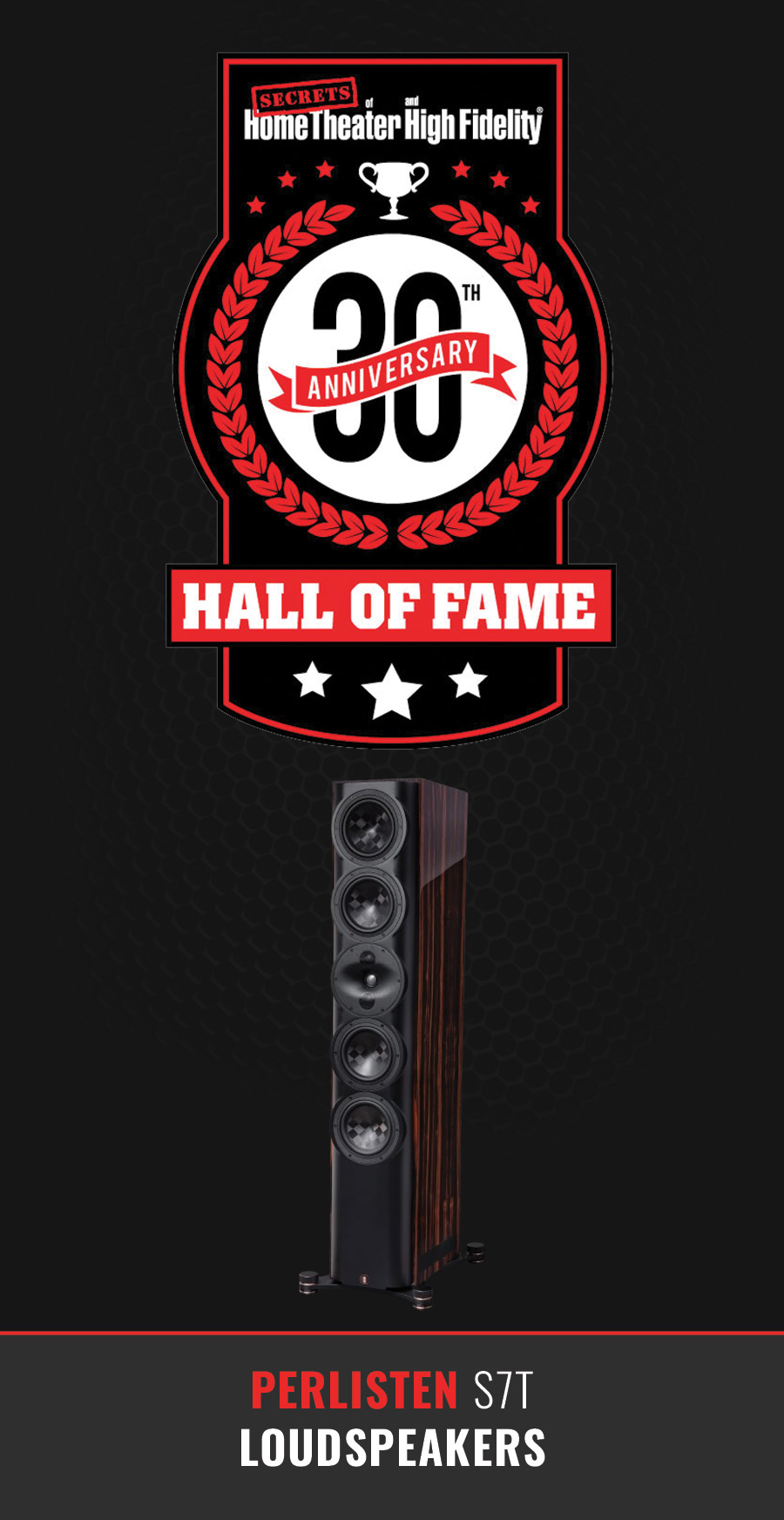
Perlisten S7t Loudspeakers Review and Measurements – Carlo Lo Raso, 2021
Designed to attenuate floor and ceiling reflections, it smooths the near-field early reflection and sound power response curves at the crossover points. The Secrets review confirmed the company’s claims for vertical response in the near-field. It produced an in-room spatial average with the fewest minor deviations from the target curve we have ever seen. While designed for full range high output performance to meet THX Dominus specifications, Editor-In-Chief Carlo Lo Raso found that a combination of the Perlisten S7t and the matching D212 subwoofer would crush all comers in both intensity and finesse in his large studio listening space. – David A. Rich
Review and Commentary:
Beyond simply being able to resolve musical details in seemingly proper balance, the Perlisten S7t had a sense of scale about their presentation that, to me, put them in a league above several other comparable speakers that I’ve had in this room. These Perlisten speakers seem to be able to bend my room to their will. I assume that is in no small part due to the DPC Array doing its thing combined with the low-distortion bass drivers doing their voodoo as well. The technology incorporated into the speakers and subwoofers, while not completely new, is uniquely applied and leads to quantifiably positive results both by ear and by measurement. As a straight 2-channel listening system the S7t are an exceptionally capable pair of loudspeakers that can honestly compete with the best out there. When used as part of the entire home theater package, as tested here, the results are electrifying, immersive, and completely convincing for both movies and music. I have not experienced better, yet, in my home. – Carlo Lo Raso
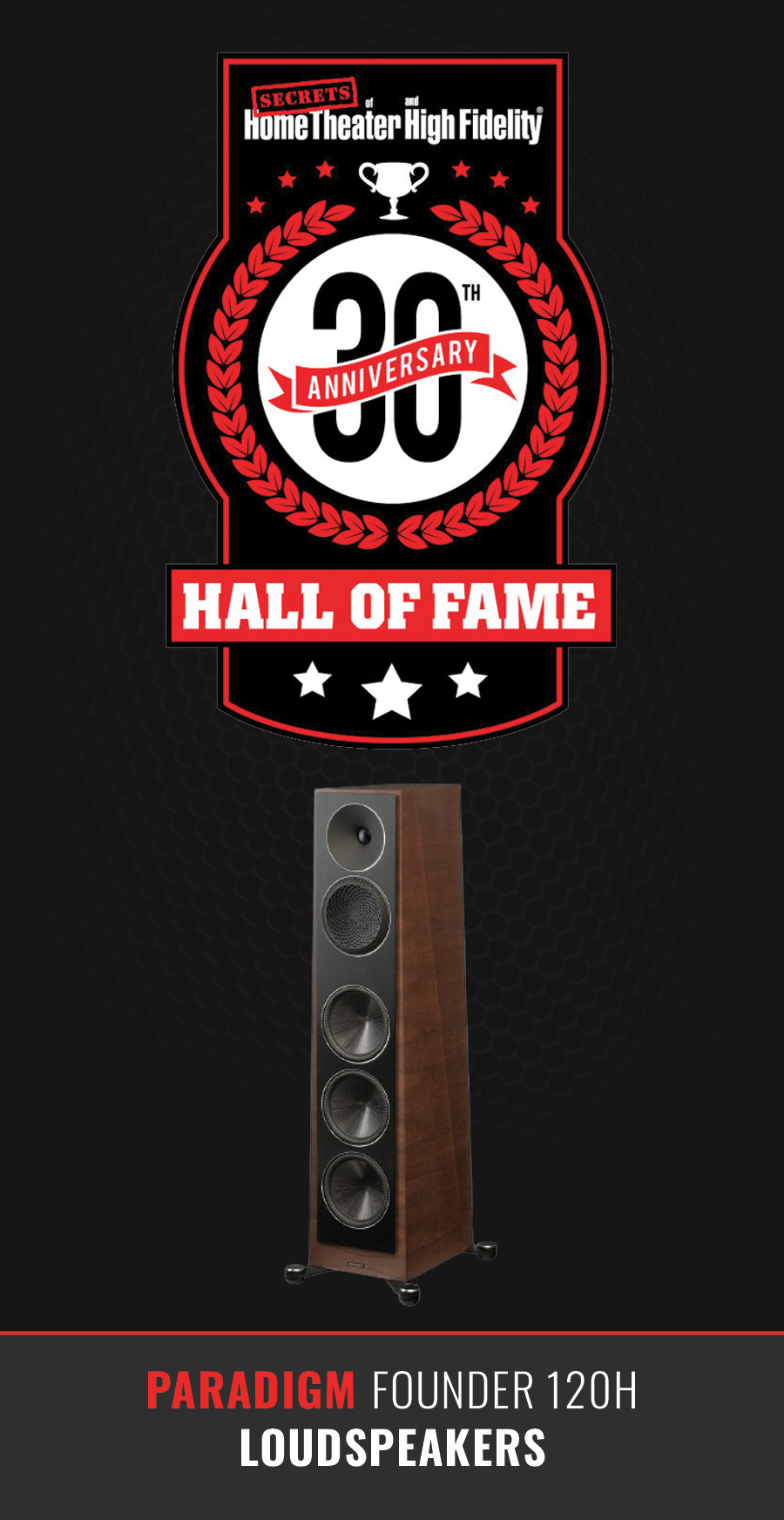
Paradigm Founder 120H Loudspeakers Review and Measurements – 2022, Carlo Lo Raso
Paradigm Founder 120H Based Home Theater System Review and Video – 2022, Taps Das
Having an active bass section in a larger tower loudspeaker is not a new concept, a few companies like GoldenEar and Paradigm itself have done this in the past. However, incorporating on-board room correction (in this case Anthem’s ARC Genesis) to that amplified bass section is a new wrinkle. Thus, having a way to optimize and integrate the most troublesome aspect of a speaker’s in-room performance without having to purchase a preamp/processor endowed with a room correction scheme is a bit of genius. It is also a novel way to get audiophiles to embrace two big “bugaboos” of their religion, active speakers, and room correction in a way that they don’t feel deprived of choice and control. And when served up on a platter as visually and technically well-designed as the Founder 120H it’s hard to say no! – Carlo Lo Raso
Review and Commentary:
First things first, these speakers throw out a huge image. They sound big, detailed, and effortless! The Founder 120H seems to have that deep dynamic capacity where they do not fluster easily, if at all when pushed. Much of that, in the Paradigm’s case, is thanks to that powered bass section. Taking the bass reproduction heavy lifting away from your power amplifier leaves it free to focus on the less demanding midrange and tweeter and inherently produces less overall distortion. This made the 120H a perfect match for my ultralow distortion Benchmark Media electronics. My AHB2 power amp had no issue driving the Paradigms to ridiculous levels without duress. The output just kept scaling louder and remained as clean and clear as could be. When the active bass section was calibrated, the Paradigm Founder 120H produced some of the best quality bass that I have ever heard from a tower loudspeaker. Once ARC Genesis had done its thing, the immediacy, the detail, and the sheer impact of what I was hearing from the big stuff like kick drums, timpani, organ, acoustic bass, and electronic bass was exceedingly good. Very much like having a well-integrated subwoofer, or two, in the system. But even on the less obvious stuff like piano, some woodwinds, and acoustic guitar, it all benefitted from the additional body of that now-optimized bass section. – Carlo Lo Raso

Linkwitz LX521.4MG Loudspeakers Review and Measurements – 2024, Carlo Lo Raso
Carlo Lo Raso found that “the LX 521.4MG genuinely sounds like no other loudspeaker out there, and they come the closest that I have heard in my home to recreating a convincing musical event.” As the inventor explains, “Dipole loudspeakers in the form of large planar electrostatic or magnetic radiator panels tend to suffer from multi-beam radiation due to acoustically large radiating surfaces. Size can be overcome by using conventional piston drivers with appropriate cone diameter”. The LX521.4MG is the culmination of 30 years of work by Siegfried Linkwitz on dipole active speakers using cone and dome drivers. – David A. Rich
Review and Commentary:
The Linkwitz LX521.4MG with its fully dipole top section and bass bin, once positionally dialed-in, genuinely created the most natural-sounding musical illusion that I have experienced yet from a commercially available pair of loudspeakers. It was so uncanny that it took my brain a little while to process what was going on. As a complete turnkey system, there is minimal fussing around with component details to make sure everything behaves. Everything, beyond your source and volume control, is designed to work hand-in-glove with each other. Again, speaker positioning is the most critical aspect to get right. Once set, you are treated to an ease in the delivery of your favorite music, the whole bandwidth of it from top-to-bottom doesn’t feel projected at you. It is just there. Yes, the illusion is most apparent when you are sitting in the traditional sweet spot and just listening. In those cases, I enjoyed a sonic picture that had not just an expansive amount of width but was also accompanied by an inordinate sense of depth to fully complete the image. There was plenty of detail in the image that placed vocalists, instruments, and performers exactly where they should be without sounding irritating in the upper frequencies. – Carlo Lo Raso
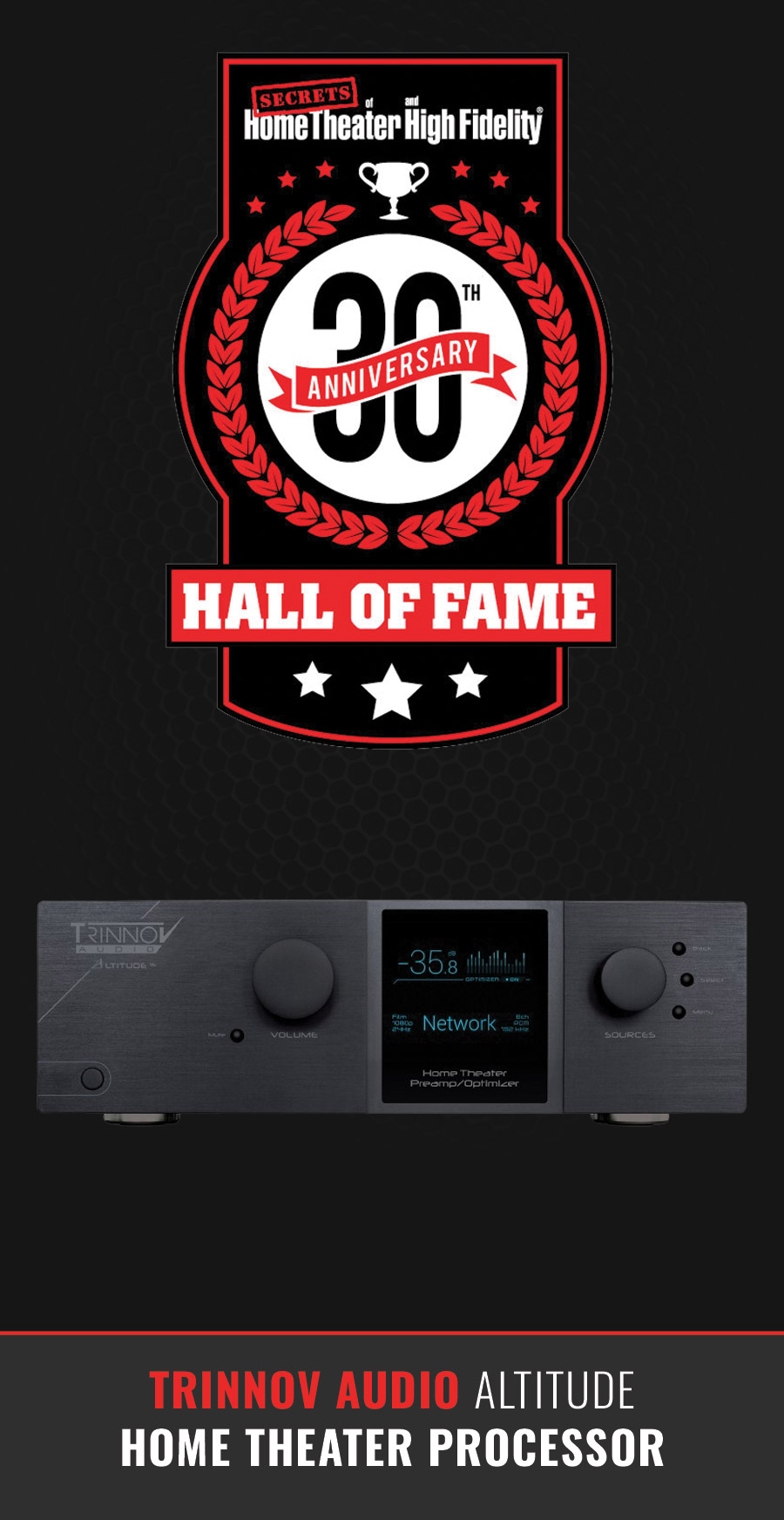
Trinnov Audio Altitude 16 Preamp Processor Review and Measurements – 2021, Robert Kozel
The first and only Pre / Pro that compensates for non-ideally placed speakers using a process called re-mapping. A novel multiple microphone measurement system locates each speaker in three dimensions. The display shows the original place measurement and correction in all three dimensions. The unit uses software-based codecs, allowing for easy updates. Robert Kozel Reports, “It delivers a superb listening experience for music, movies, and multi-channel content.” The new Waveform multiple subwoofer bass management software update has not been tested. – David A. Rich
Review and Commentary:
In my daily usage of the Altitude16, I preferred to leave the Trinnov Optimizer engaged with its normal processing defaults applying acoustic correction, level alignment, and delay alignment. I also left the 3D remapping functionality engaged, which is designed to correct for speaker placement issues by “remapping” sounds to their correct location in the room. The performance of the Altitude16 as a stereo preamplifier was superb. Music was wonderfully detailed and spectacularly imaged, with a wide soundstage that at times made me wonder if I was listening in a surround mode. Both male and female voices sounded natural, instruments had a distinct presence in the room, and I was consistently impressed by the layers of detail and nuance that the Altitude16 managed to extract from any content. Experiencing movies on the Altitude16 was equally thrilling thanks to the Trinnov Optimizer’s 3D Remapping technology. There were two primary differences taking place in my room. The first being that the perceived sound from the center channel speaker was now lowered, positioned directly in front of the listening position seamlessly blending between the main left and right speakers. The other difference was that many sound effects moved through the listening room in a more realistic and immersive way, creating a wonderful sense of depth and spaciousness that I’ve not experienced in my room from other processors. Listening to movies and especially Dolby Atmos and DTS:X content was simply amazing. – Robert Kozel
Headphone Development
The personal audio space continues to grow and expand, seemingly unencumbered by general economic concerns that have slowed other parts of the audio market. At every CanJam we attend, the sheer volume of new products and technology evolution is startling. This, in large part, seems to be driven by a vibrant, diverse, and youthful community of eager fans who look as much for style as they do for substance in their personal audio products.
In 2015 when HIFIMAN premiered the original HE1000 headphones, I thought the company was crazy. “Who would buy a $3000 pair of non-electrostatic headphones” I wondered. Then I heard them and couldn’t believe my ears. The first HE1000 set so many benchmarks for sound, technology, and what people would pay, that the high-end headphone market has just continued to push higher year after year. Those planar dynamic headphones were very much a revelation on so many levels. Thankfully, much of the innovation has eventually trickled down to more mainstream products too.
This market growth also allowed boutique and individualist companies like Meze from Romania to make a name for themselves with unique and personalized headphone and IEM designs. While the brand became popular with many, particularly with its flagship headphones, it was arguably the Meze 109PRO that coalesced the brand’s ethos and technical chops into a product that broadest appeal and value. For the price, there are precious few headphones that feel and sound so special.
Dan Clark Audio is an example of a home-grown company that began by “modding” headphones from other companies (at that time they were known as Mr. Speakers), to grow into a technical and design powerhouse when it comes to headphones. While they have a full range of exceptional products, including electrostatic headphones, the Aeon2 Noire hit that sweet spot of design, performance, and price that is very rare. Both it and the Meze are headphones I point people to if they can have only one headphone for everything.
Bluetooth and wireless standards are the next headphone frontier, and they are advancing with speed and purpose. The combination of active amplification and DSP customed tailored to a driver and its enclosure along with longer battery life promise the convergence of convenience and performance. All that remains is the refinement of the ergonomics and the consistency of a robust bandwidth pipe. We are very close to the point where wireless headphones will sound indistinguishable from their wired brethren. The first wireless headphones that convinced me of this were the No.5909 from Mark Levenson. They were the first to have all the necessary elements in balance, with style, comfort, sound, and usability at least a step above all others. Plus, they sounded fantastic as just a passive wired set of headphones.
One cannot think of electrostatic headphones and not immediately think of STAX. They are the originator of the product and for a small and fairly traditional Japanese company, they still set the standard for others to follow. While both Audeze and Dan Clark Audio have made great strides in electrostatic headphone technology, STAX set the stage for them. And if there is one model in the headphone line (or Earspeakers as they prefer you call them) that best covers the bases of what makes electrostatic headphones so good, it would be the STAX L700 Mk2. The second generation of the original Lambda “cheese graters.” These were the audiophile headphones of an entire generation and they still hold their own today.
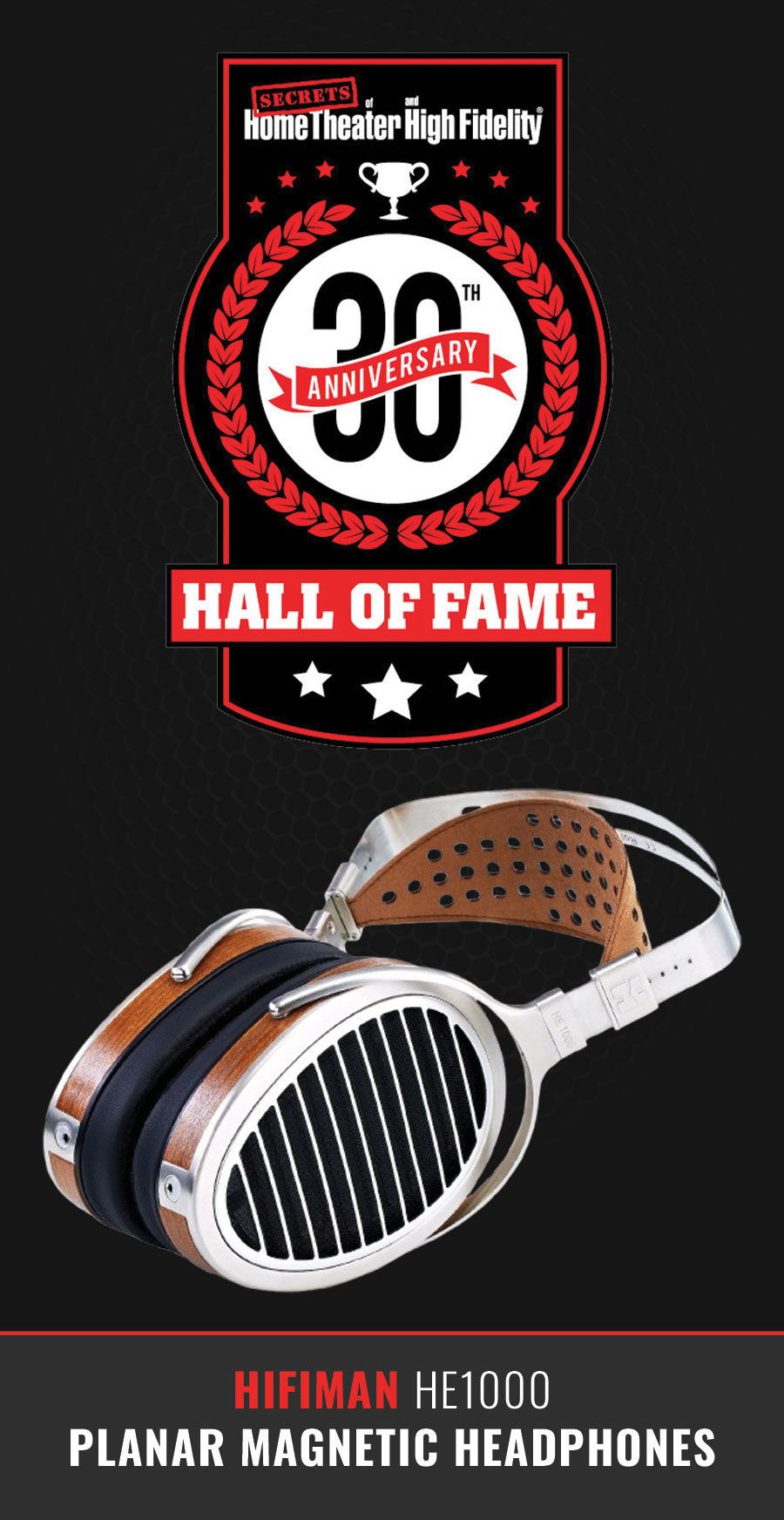
HIFIMAN HE1000 Planar Magnetic Headphones Review – 2015, Carlo Lo Raso
Review and Commentary:
With the HE-1000s, I feel it’s safe to say that HiFIMAN has created a benchmark headphone product. Even with my brief sampling of the pre-production prototypes at CES this past January, I had a pretty strong feeling that these were going to be something special. This past month, living with them and listening to them on a daily basis, has borne out my suspicions. The HE-1000s are the finest headphones that I have ever listened to. They have a wonderfully open and natural sonic signature. The speed and clarity at which they reproduce all manner of music is something that needs to be experienced. It causes the headphones to sonically disappear leaving no obstructions between you and the music. – Carlo Lo Raso
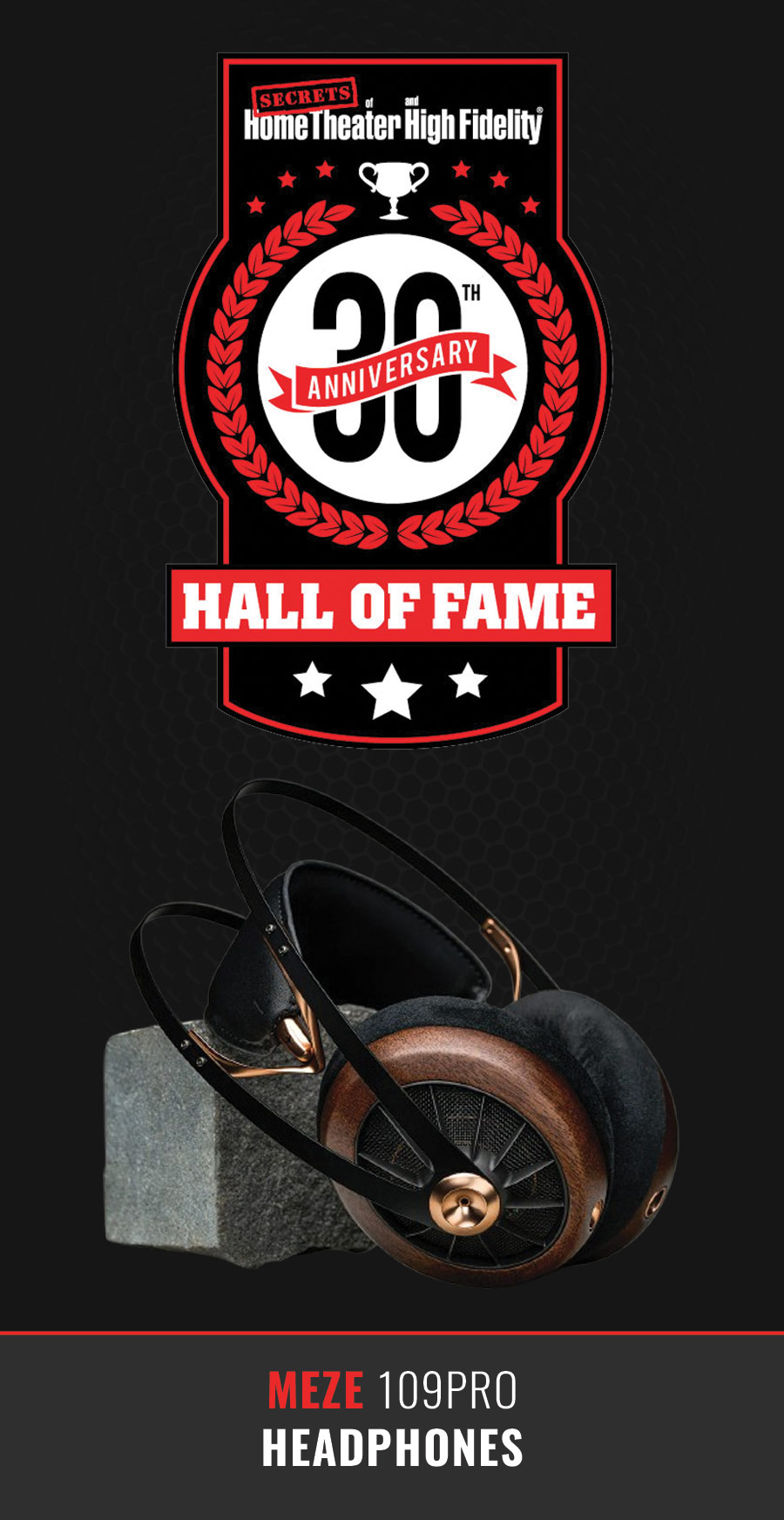
Meze 109PRO Headphones Review – 2023, Carlo Lo Raso
Review and Commentary:
The Meze 109 PRO are some of the most comfortable and best-sounding open-back headphones that I have ever come across full stop. They are constructed to a standard of finish that quite frankly shames some other more expensive brands out there. They are also tuned in such a way that they will flatter almost any music you see fit to listen to through them. They also look fantastic and are fairly easy to drive to boot. They have shockingly few weaknesses and I can think of few better ways to burn an $800 hole in my pocketbook. I could easily see having a pair of Meze 109 PRO and a pair of Dan Clark Aeon2 Noire and that would completely cover my open and closed-back headphone needs. The Meze 109 PRO is a superb pair of headphones, and I intend to nominate them to our Recommended Gear list for 2023. They have my highest recommendation. – Carlo Lo Raso
Secrets Sponsor
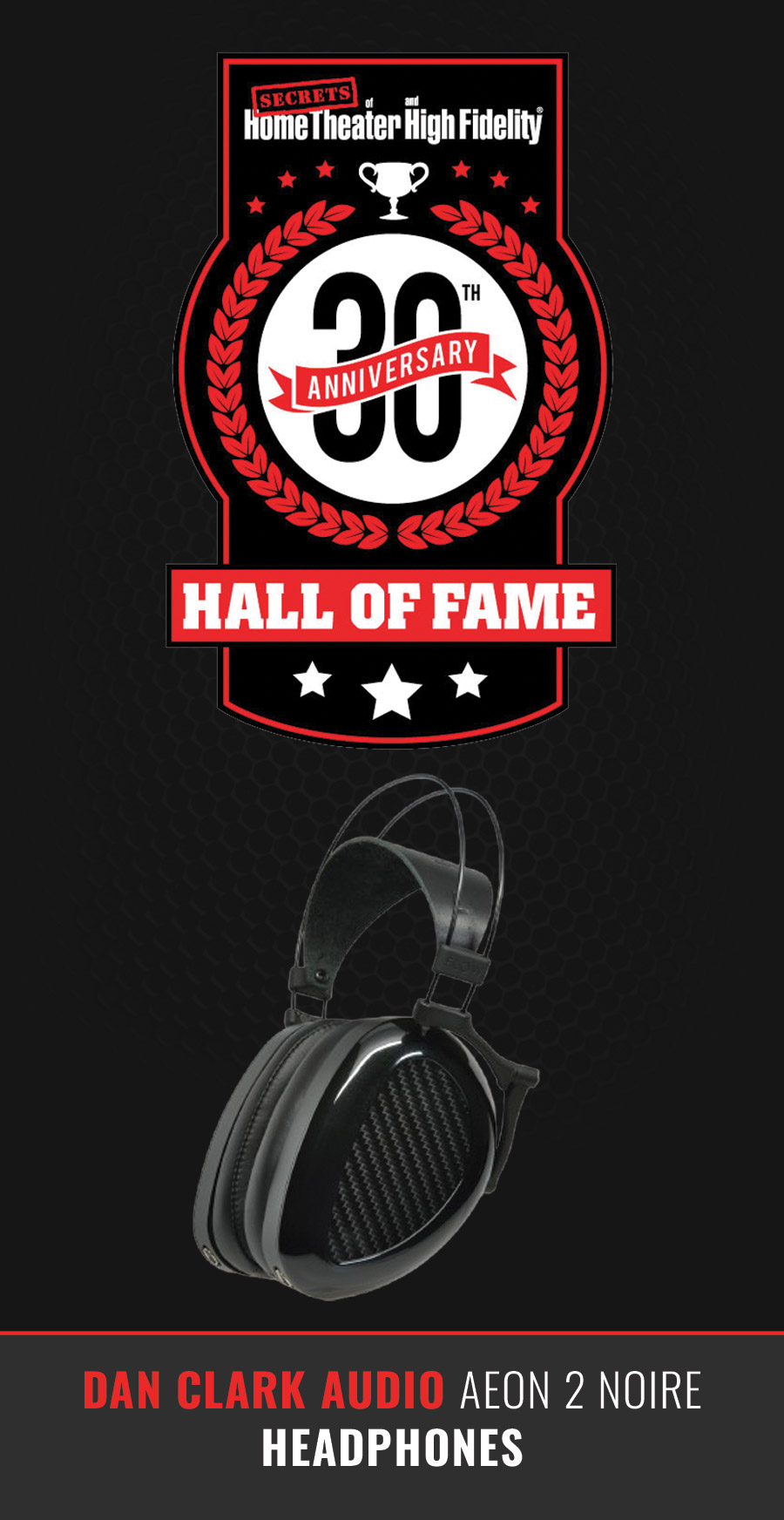
Dan Clark Audio Aeon 2 Noire Headphones Review – 2021, Carlo Lo Raso
Review and Commentary:
The Dan Clark Audio Aeon 2 Noire, in my estimation, perfectly fits that one headphone category few people ever mention. That is the “If I can only have one pair of headphones to cover everything” category. In short, the all-rounder, the MVP. In the time that I have spent with them during this review, I found that the Aeon 2 Noire excelled in so many qualities that they became the first headphones I would grab when I didn’t need wireless or noise cancellation. For me, they had comfort in spades, a weight that made them easy to wear for long stretches, a clever design that made them so simple to compress for travel, along with understated good looks (to me the gloss black with carbon fiber baffles is the bee’s knees). Most important of all, they sound spectacular with a satisfying combination of low-end punch, transparency of detail, and just enough image depth to make it all sound natural and eminently enjoyable. I don’t know whether that is the magic of the HARMAN curve at work, but these headphones, with the lightest foam filter insert installed, could easily be my daily driver headphones. I would not want for much else in my day-to-day listening habits. For the $899.99 MSRP, I think you would have to spend significantly more money to get noticeably better sound quality. – Carlo Lo Raso

Mark Levenson No.5909 Wireless ANC Headphones Review – 2022, Carlo Lo Raso
Review and Commentary:
The Mark Levinson No.5909 ended up completely overturning my preconceptions of these headphones being more style than substance. Besides their elite good looks, a serious level of R&D has gone into these cans to not only make them sound exceptional but also to make them almost effortless to use. In a very real sense, they are two headphones in one. The benefits of enhanced range and bandwidth found in the latest Bluetooth 5.1 chipset, meshed with effective ANC performance, selectable bass tuning, and great comfort make them an excellent set of wireless travel headphones. The Beryllium-coated drivers not only deliver the sonic goods when operating wirelessly but they continue to do so when listening completely passively. It’s actually a better-than-enjoyable experience. No longer are you stuck with the sound of “last resort” when the power runs out. I like the passive sound of the Mark Levinson No.5909 better than some more expensive wired headphones out there. It’s that good. Looking at the entirety of what the No.5909 can do, they are certainly worth the price. They are the best of their breed thus far, with no qualifiers. – Carlo Lo Raso
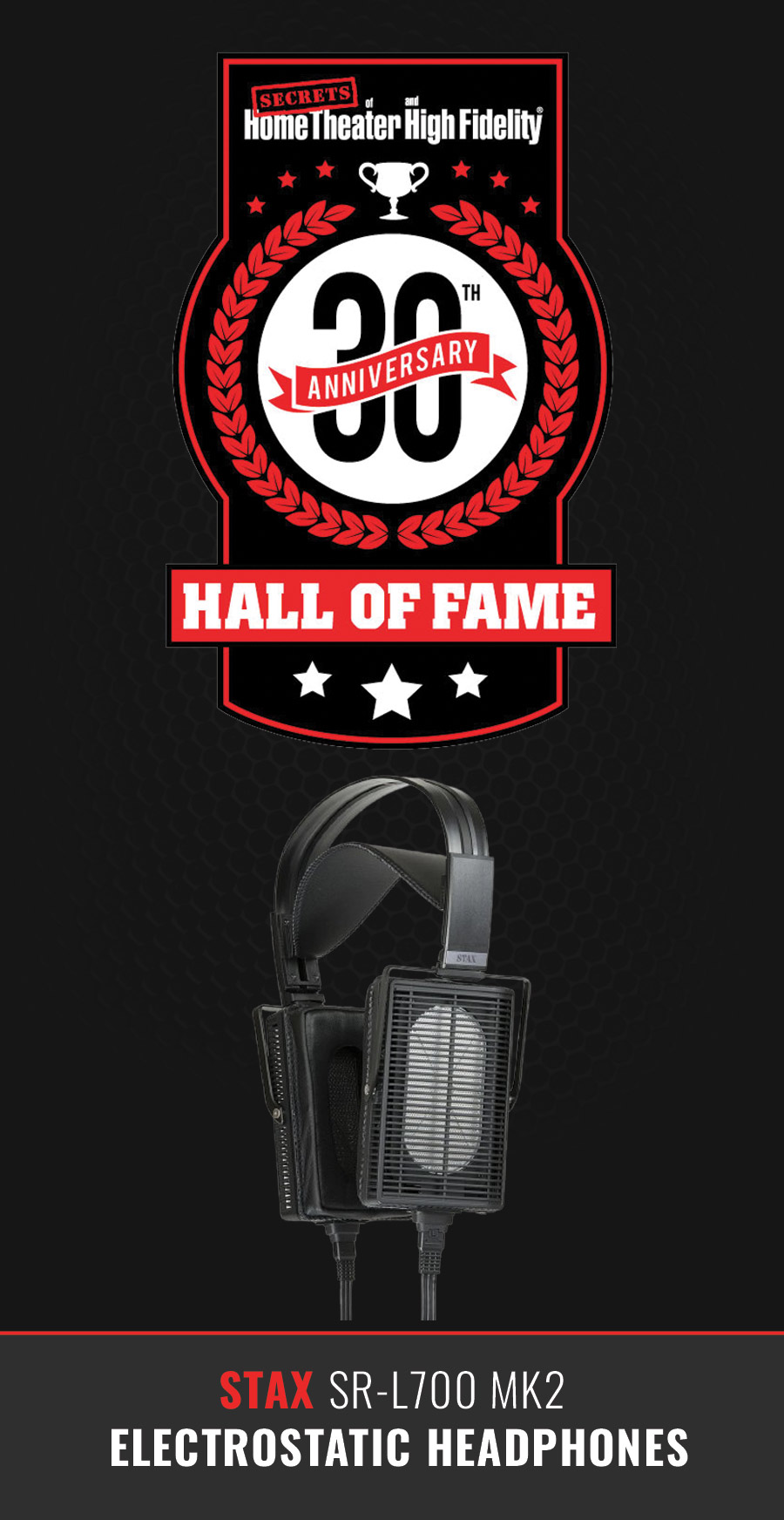
STAX L700 MK2 Electrostatic Headphones Review – 2020, Mel Martin
Review and Commentary:
STAX created the first electrostatic headset in 1960. This is the latest version of the category-defining Lambda Series electrostatic headphones that were introduced in 1979.
Sometimes something really new can be found in updated legacy devices. That’s the case with the latest incarnation of the Stax SR-L700 MKII Earspeakers, a reference design that is one of the most impressive devices for listening to music that I’ve ever heard.
This latest ‘earspeaker’ from Stax, who feels that the term ‘headphones’ doesn’t do justice to their products, impressed me and every audiophile that auditioned my review unit. They are comfortable, highly revealing, and really require the best quality program material. Playing some garden variety CDs will immediately make it clear that the recordings are not the best. Even little details in the recording room like the HVAC or the movement of music stands are quite apparent. This is both a blessing because the Stax SR-L700 MKII Earspeakers are so revealing and a curse because you will hear ‘everything.’ Stax headphones will spoil you for anything else. While expensive, they deliver, and people who enjoy seriously listening to headphones will want to audition them. – Mel Martin
Though the past five years haven’t seen any revolutions in flat panel display technology, there has been significant evolution. Today’s premium televisions are based on either Mini LED or OLED panels and though these are not new, it is only recently that they have become affordable.
OLED is currently the only self-emissive display technology available to consumers. CRT and Plasma are long gone so it is up to OLED to be the sole provider of the deepest black levels possible in a display. Like all new tech, they were once frightfully expensive but thanks mainly to the efforts of LG Display, you can buy a 65-inch Ultra HD OLED TV for well around $1,800. This gets you HDR, Dolby Vision, and around 100% coverage of DCI-P3 color. What could be better? I can’t think of anything.
If high brightness is a priority though, Mini LED offers peak outputs of over 1,000 nits. Some models have topped 2,000 nits which is an incredible level. This technology is also not new, but Samsung has brought it to the mainstream which means prices are lower. Their latest Neo QLED models have as many as 900 dimming zones, and you can get a 65-inch panel for around $1,700. – Chris Eberle
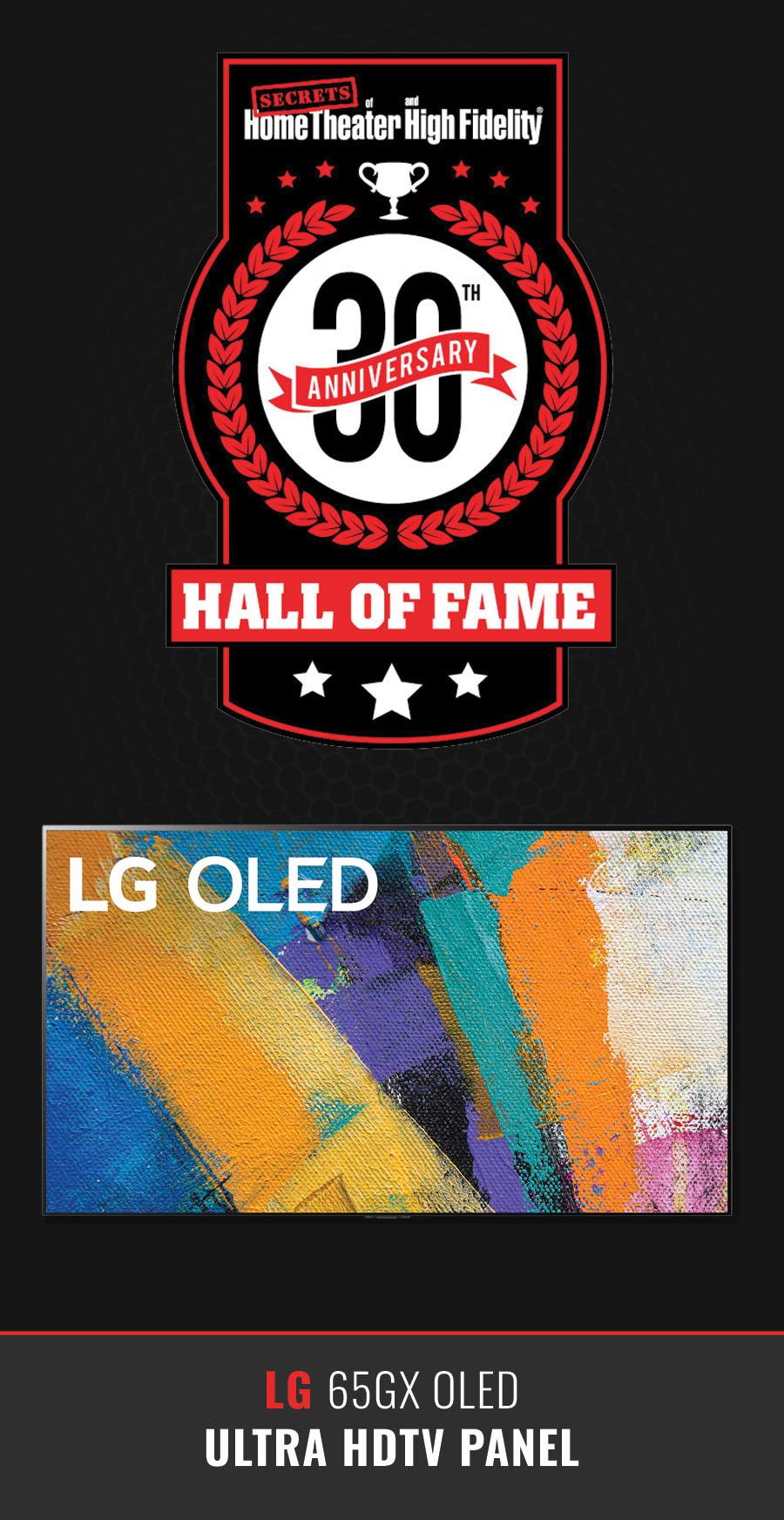
LG 65GX OLED ULTRA HDTV Review and Measurements – 2020, Chris Eberle
Review and Commentary:
There is little more I can say about the LG OLED 65GX Ultra HDTV other than – Bravo! It is capable of tremendous performance, and one needn’t tweak and fiddle with settings to unlock that goodness. Right out of the box, it delivers a stunning picture with accurate color for all types of content. From DVDs to Ultra HD Blu-ray and everything in between, it provides the best possible image.
Video processing is also superb. Not only did the 65GX ace my tests, but it also handled motion with ease. Fast-moving objects and camera pans are smooth without the unnatural soap opera effect that plagues many LCDs. And gamers will appreciate the 120Hz refresh rate with adaptive sync.
I must also give a nod to LG’s well-engineered WebOS. It is one of the best streaming platforms I have encountered. It’s truly possible to simply plug in an Ethernet cable or connect to Wi-Fi to access a universe of content. And if you go looking for Ultra HD streams with HDR and extended color, the 65GX will happily play them. No surround speaker system in your living room? LG’s built-in speakers deliver clear audio with a wide soundstage and decent bass.
While I have tested and calibrated many TVs, projectors, and monitors during my career, none have impressed me as much as the LG OLED 65GX. It is truly the best display I have ever reviewed. – Chris Eberle
Secrets Sponsor
In buzz in the front projection world are, of course, lasers. Longtime projector users like me have toiled with hot and expensive bulbs that last maybe 2,000 hours and dim over time. Lasers don’t dim or degrade, and they last 20,000 hours. There are so many models that I can’t name just one as an iconic example. But I must tip my hat to the technology. Like OLED and Mini LED, laser projectors are not new. But a few years ago, you would pay five figures for one. Now, lasers are common enough that they are included in sub-$10,000 displays. My recent review of the BenQ W5800 shows what it can do for around $6,000. It’s bright, covers 100% of DCI-P3, supports HDR, and includes premium optics for one of the sharpest pictures I’ve seen from any projector.
The other major addition to the projector market from the past five years is the ultra-short throw. And many of them have lasers too. These receiver-sized units are placed in front of the screen, just a few inches back, and project a 100-inch or larger image. When used with an ambient light-rejecting screen, they make viable television replacements and are marketed as such. Check out my coverage of the past two years of UST Projector Shootouts for a crash course in what’s out there. – Chris Eberle
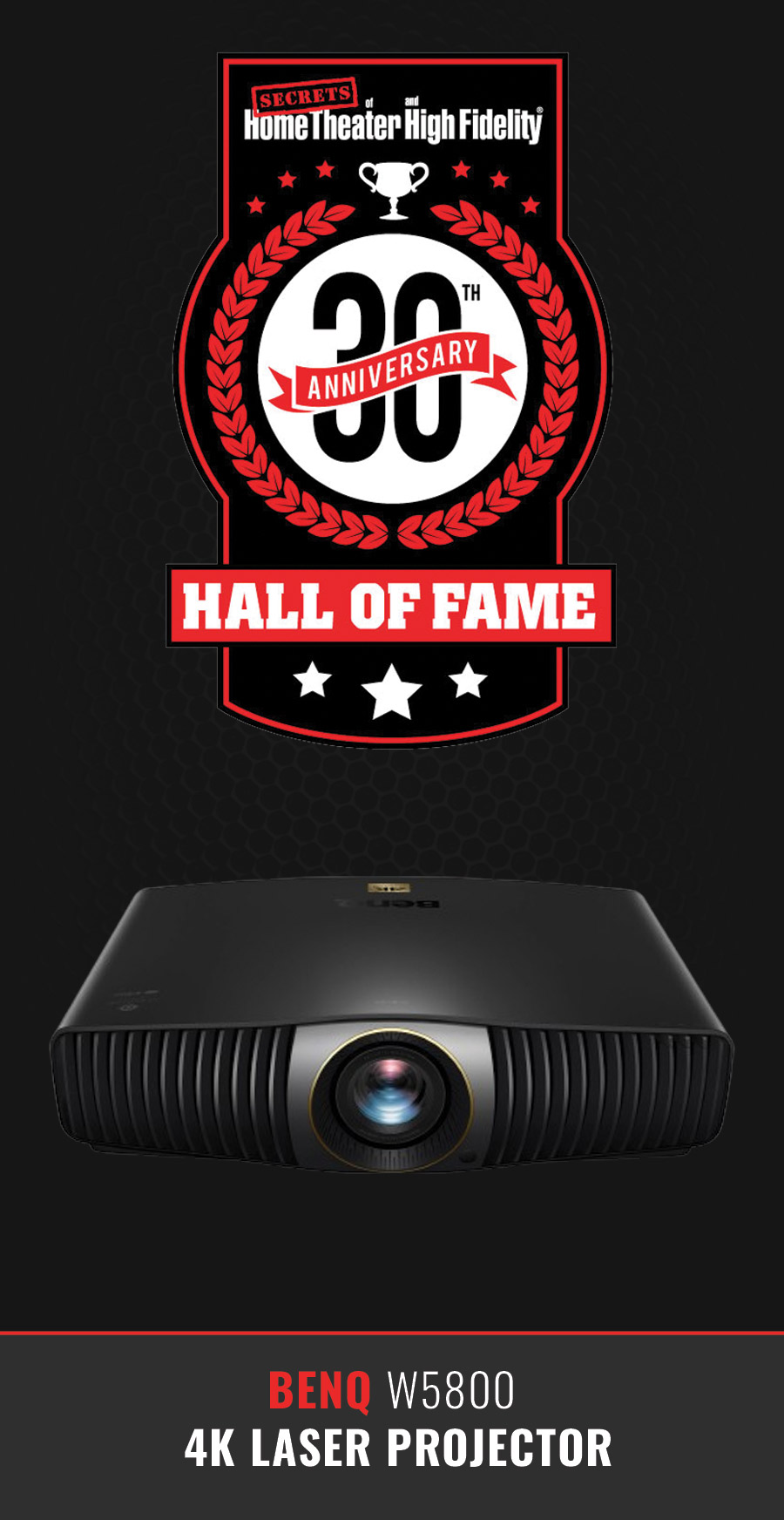
BenQ W5800 4K Laser Projector Review and Measurements – 2024, Chris Eberle
Review and Commentary:
The W5800 4K Laser Projector is the best BenQ display I’ve reviewed to date. It takes their winning DLP formula and uplevels it. The lens is as good as the very best I’ve seen anywhere. Color is accurate out of the box. It has the largest color gamut I’ve measured from any projector. And it does a superb job with HDR and SDR content alike. The Local and Global Contrast Enhancement options truly broaden the dynamic range with no downsides. The motorized lens makes setup and geometry super easy. And it’s quiet. Even on the brightest lamp mode, there’s no audible fan noise.
I hesitate to call any display perfect, but I can’t find anything to complain about here. The BenQ W5800 4K Laser Projector is as good as the very best I’ve seen and better in some ways. It receives my highest recommendation. – Chris Eberle
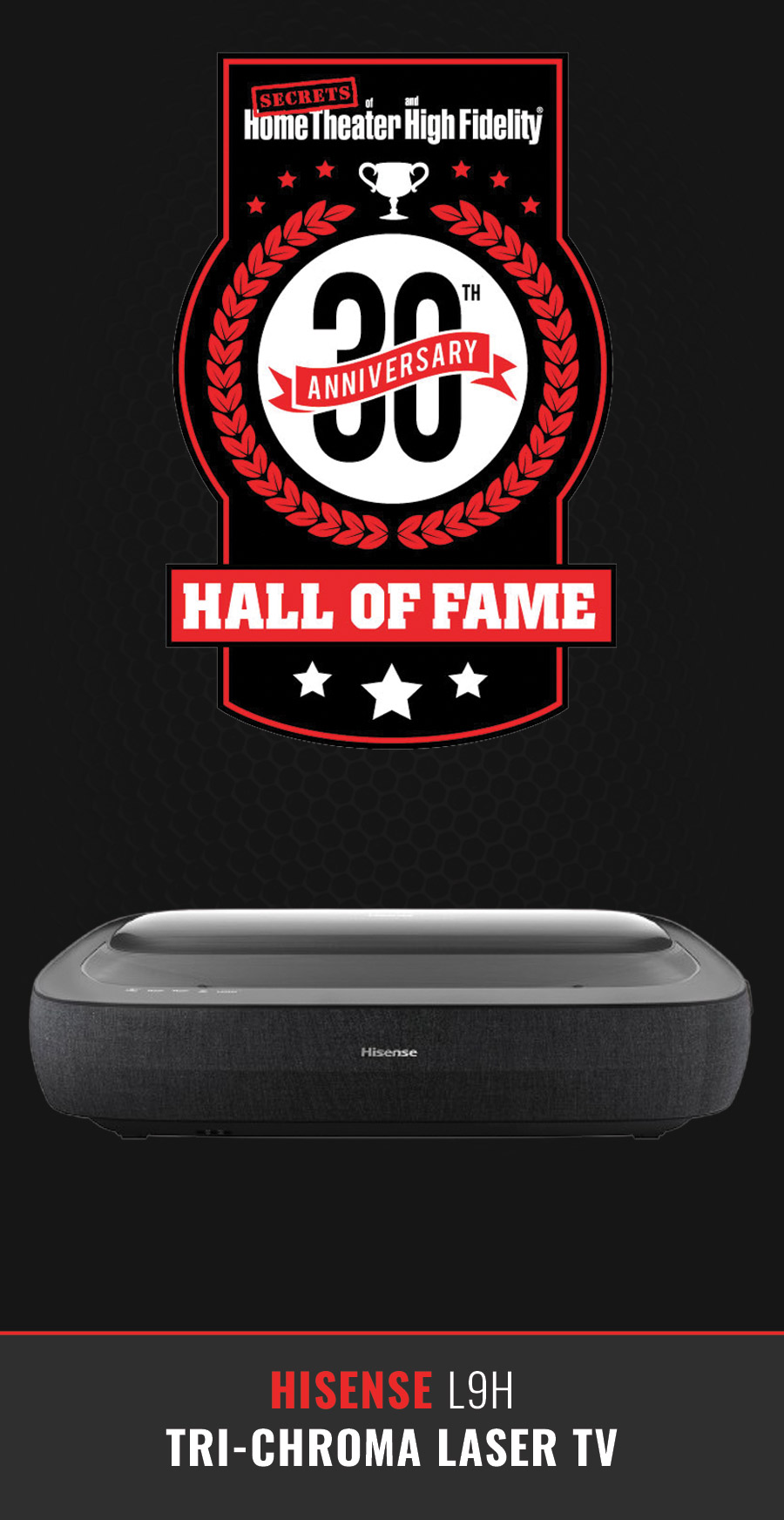
Hisense L9H Tri-Chroma Laser TV Review and Measurements – 2024, Chris Eberle
Review and Commentary:
Hisense bills the L9H as a laser TV, but it is more than just a television replacement. It’s a really good projector too. It delivers a sharp picture with fantastic color. With the widest gamut I’ve yet measured, its HDR color performance exceeds that of a flat-panel TV. Though it won’t quite render the black levels of an OLED or Mini LED display, the tremendous color saturation quickly becomes addictive. I was also impressed by the Google TV and streaming functions. Integrated solutions like this have continued to evolve and the L9H is one of the best I’ve seen yet apart from an actual television. It’s snappy and responsive, and quick to switch between signal formats.
If you’re truly planning to use the L9H as a television, I highly recommend the included screen. It does an admirable job of rejecting ambient light and it increases perceived contrast. My only wish is for larger-size options. 100 and 120 inches are big, but you can buy 100-inch TVs now. A 200-inch L9H would be killer.
That minor complaint aside, the Hisense L9H Tri-Chroma Laser TV is a superb display. It checks all the boxes and delivers more color than anything else I’ve reviewed. The picture is stunning, the streaming interface works well, and the sound is decent. If you’re ready to replace your TV with a UST projector, you’ll be hard-pressed to do better. – Chris Eberle
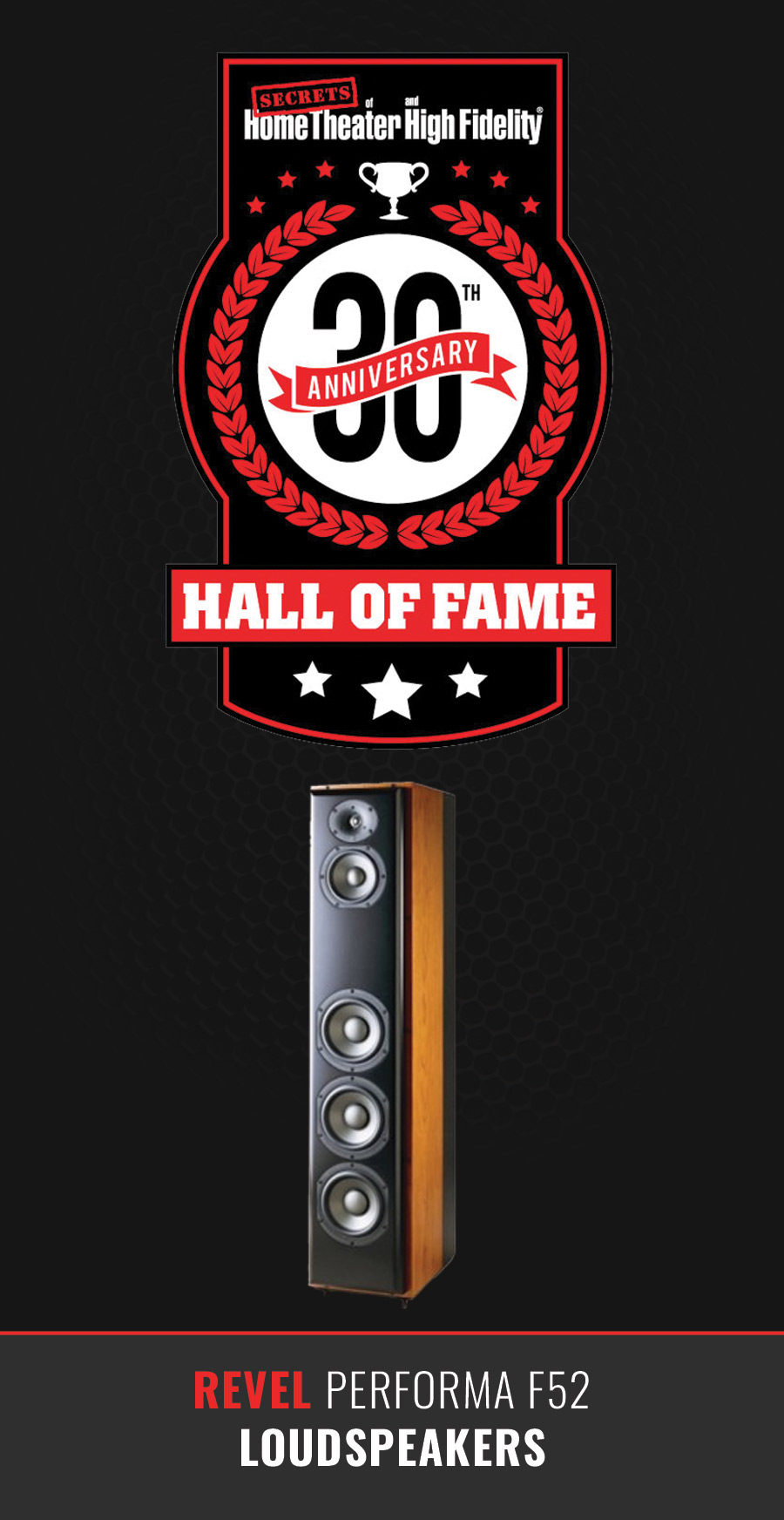
Introduced in 2006, Revel finally made full use of Dr. Floyd Toole’s design methodology. The result was the F52 floor-standing loudspeakers at $6500. The Harman spin curves, provided privately by Revel, show that the F52s performance has only been slightly exceeded by any speaker that followed.
(Editor’s Note: Spin curves or “Spin-O-Rama” measurements are a set of 6 acoustic measurements (On-Axis Response, Listening Window, Early Reflections, Total Sound Power, Total Sound Power Directivity Index, and Early Reflections Directivity Index) that, when viewed together, help to characterize a loudspeaker’s overall performance. The name is derived from the measurement process which consists of rotating a speaker a full 360 degrees on both it’s vertical and horizontal axis within an anechoic chamber. A frequency response measurement of the speaker is taken at every 10-degrees of travel along both axis of rotation and the spin curves are calculated from all the resulting data. This measurement process was developed by Harman and was adopted by the Consumer Technology Association and the American National Standards Institute as the ANSI/CTA-2034-A standard.)
In 2006, Sumit Chawla reviewed the F52 speakers and in 2008 he reviewed the Revel Ultima2 Studio speakers. Sumit found the F52 speaker performance to be very close to the $16,000 Revel Ultima2 Studio speakers.
In 2010 Chris Eberle reviewed the Performa F52’s in a surround sound configuration.
Reviews and commentary:
Revel F52 Speaker Review and Measurements – 2006, Sumit Chawla and John Johnson
“In two-channel mode, the F52s are delightful. They are delicate in the treble, lush in the midrange, and bold in the bass. With the waveguide, the tweeter and midrange blend into a single unit. I am going to miss them, particularly their treble reproduction”.
Revel Ultima2 Studio Speakers – review comparison to F52 – 2008, Sumit Chawla
“This price will no doubt limit their market penetration. For buyers for whom this system (Ultima Studio 2) may be out of reach, there is still an excellent alternative: a system built around the Performa F52s.”
Performa F52 Surround Sound System Review – 2010, Chris Eberle
“My time with the Performa (F52) was very pleasurable.”
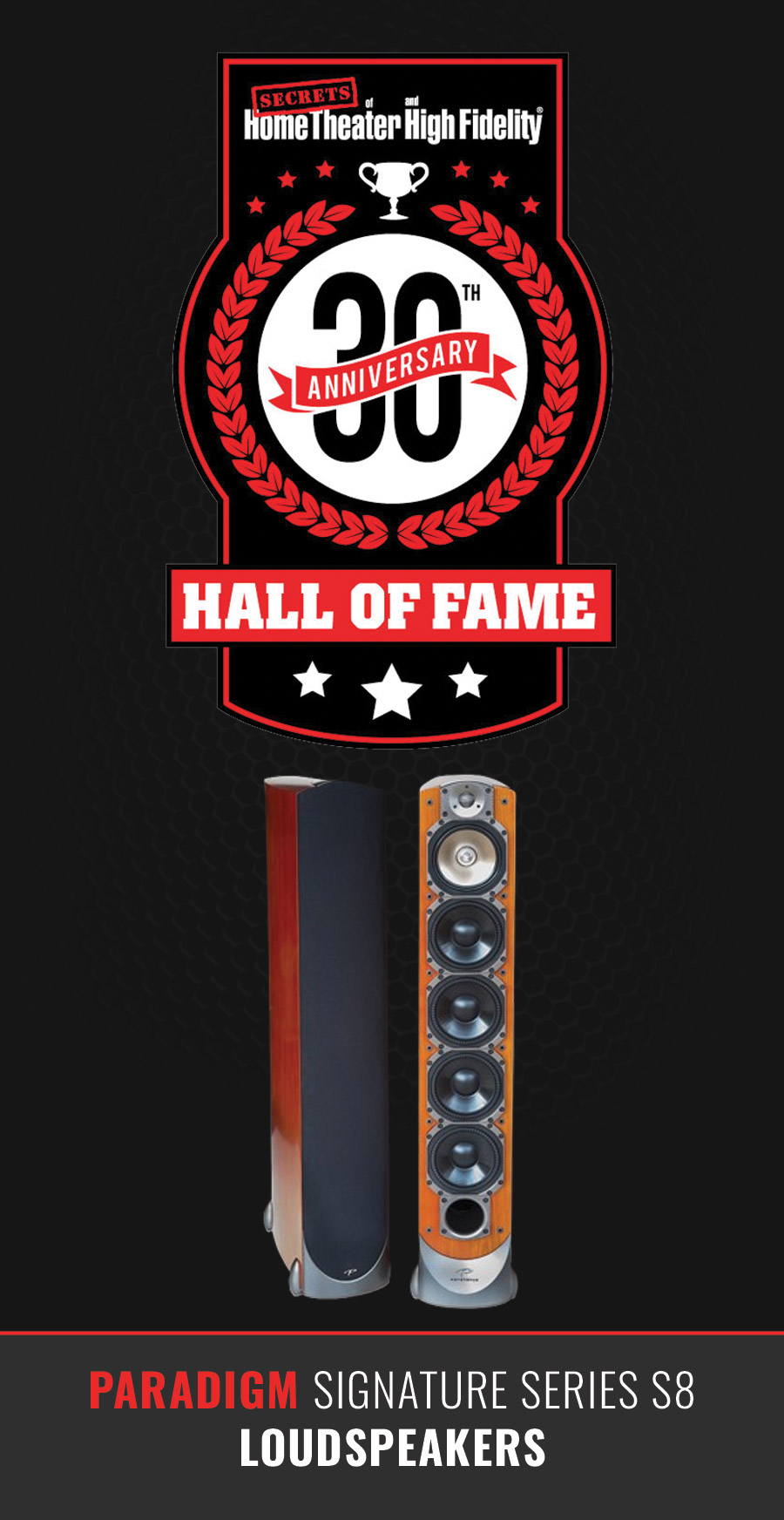
The Paradigm Reference Signature S8 speaker was introduced in 2004 with an MSRP of $5400.
Dr. Toole may have left the NRC in Canada for the US in 1991 but some of his team stayed in the land of the Maple Leaf and got to the proverbial finish line first. Up to this point, Paradigm had traditionally focused on value-oriented speakers but in 2004 they produced a cost-no-object loudspeaker called the Reference Signature 8.
Note from Dr. David A Rich: “I had access to only limited NRC anechoic chamber results. These show performance consistent with NRC goals despite the large 7-inch midrange, the small waveguide on the tweeter and lower order crossovers. The listening window is free of resonance with a desirable slight monotonic downward slope.” The rounded cabinet would influence the rest of the industry.
The V3 version was released in 2011 with a price of $8600. Woofer drivers were modified to achieve a lower extension.
Production of the S8’s continued until 2016.
Reviews and Commentary:
Paradigm Signature S8 Speakers – 2004, Yongki Go
“In fact, when you consider that many speakers in the high-end world carry stratospheric price tags, which can be many times higher than the S8 price, then the word “value” is written all over the S8 speakers… Highly recommended!”
Paradigm Reference Signature S8v2 Surround Sound System – 2008, John Johnson
“The Paradigm Reference Signature S8v2, C5v2, ADP3v2, and Servo-Sub represent state of the art in a surround sound speaker package.”
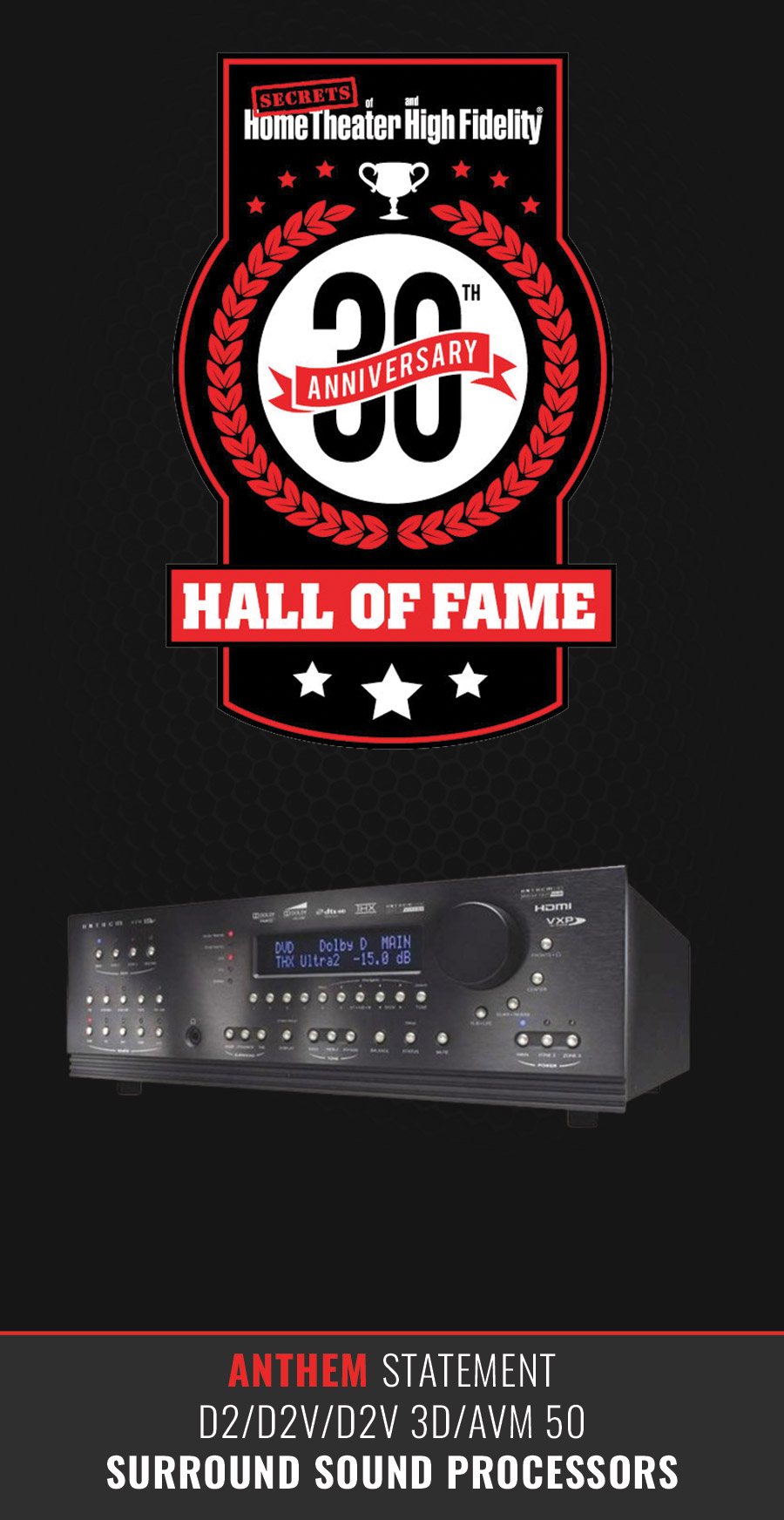
This HDMI SSP (Surround Sound Processor) may have been one of the first HDMI 1.1 units coupled with a state-of-the-art video processor. The price of the D2 was between $6700 and $7500 and the AVM 50v $5400.
The ARC room correction system is still state of the art (we still wait for DIRAC to come out with something that properly supports subwoofers). See John Johnson’s assessment of ARC (2008).
Impeccable analog performance is also still state-of-the-art today per John’s measurements in the analog domain (2009).
The digital domain is solid, marred only by a code error in the ASRC.
The cheaper AVM 50v was almost identical with the ASRC absent, lower quality ADCs, DACs and a less flashy front panel at $2000 less.
The DAC in the 2019 Anthem STR stereo products produces about the same performance.
Reviews and Commentary:
Anthem Statement D2 – 2006, Kris Deering
“The video processor is outstanding and better than the vast majority of video processors I’ve ever evaluated. The Anthem Statement D2 will continue to be my reference Audio/Video processor and I could not recommend a product more.”
Anthem Statement D2v – ARC 1.0 – 2008, John E. Johnson, Jr.
“ARC is a very scary product. If you are one of those who insist on having the best sound, and you experience ARC, especially if you can do so with your existing system, one of two things will happen: Either you will buy a D2 with ARC, or you will stop listening to your existing system knowing just how much better it would be with ARC.”
Anthem AVM50v – 2009, Brian Florian
“There are precious few pieces of consumer audio/video equipment which are as safe a bet as the Anthems. In a phrase, “Buy with confidence”.”
Anthem AVM50v –D2V – 2009, Chris Eberle and John Johnson (AP measurements)
“Factoring in the extensive video capabilities of the D2v, it would be difficult to find another product that offers so much quality and so much flexibility.”
ARC 1.3 (Part 1, Part 2) – 2013, David A. Rich
“Before the Anthem ARC, I had never heard a system with a subwoofer that had not been degraded in the crossover area. To me, this degradation from other room correction systems I have had access to was far more significant than the extension of the bottom end.
I also listened to numerous speakers, full-range, and found the result to be the best I have achieved using an electrical room correction system.”
Anthem Statement D2v 3D – 2014, Robert Kozel
“The Anthem Statement D2v 3D continues to be a reference quality component that delivers outstanding audio performance. Its feature set is unique among the high-end processors since it contains a superb video processor and Anthem Room Correction. While the overall audio design is over ten years old, the quality of that design has stood the test of time, which is something that Anthem should definitely be proud of.”
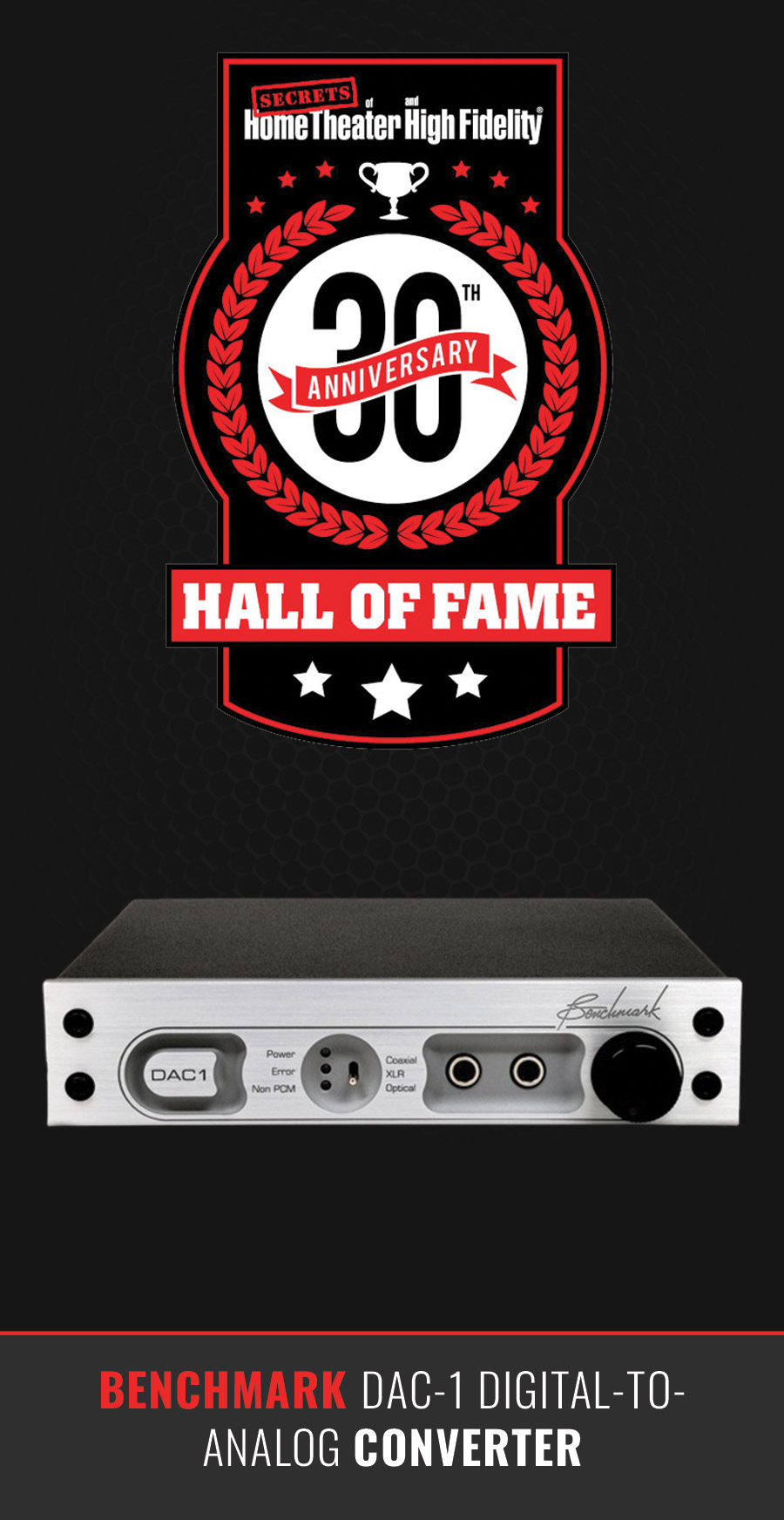
At $850, the Benchmark DAC 1 outperformed all that had come before it by a significant margin, some of the competition was priced an order of magnitude higher. It did what the companies name says: provided the Benchmark.
The DAC-1 was a product far ahead of its time. Fully ready for high resolution but finding a way to feed it a high-resolution source in 2003 was difficult. SACD’s were copy-protected to prevent a SPDIF output. DVD-A came and went fast.
The follow-on Benchmark product reviews are not listed here. They are different products with different parts and capabilities. All are state-of-the-art measuring devices. Benchmark has never relinquished that but prices have more than doubled. We would have to wait more than 10 years for high-speed internet downloads and USB to make the purchase of a Benchmark product a necessity.
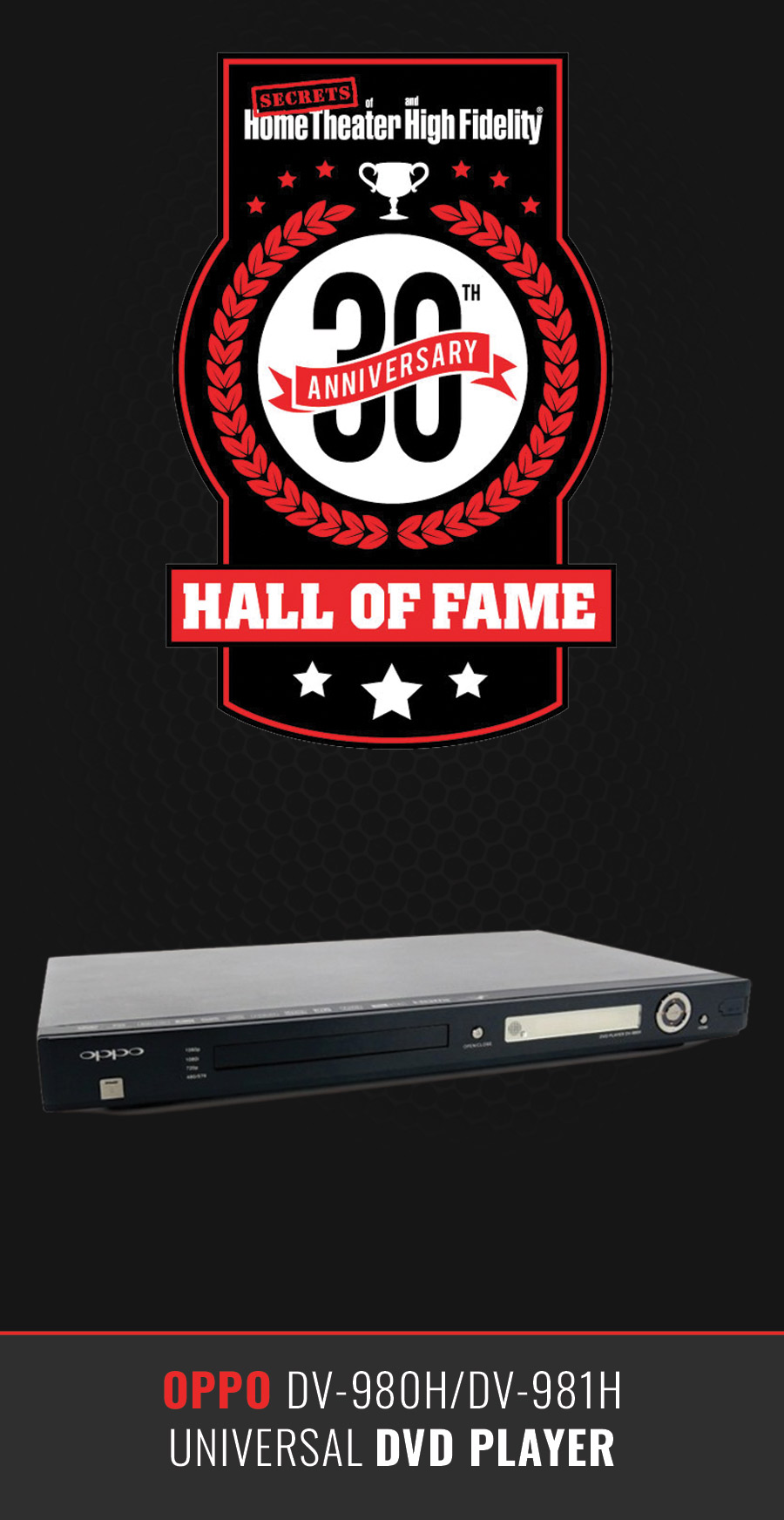
The OPPO DV-981HD and DV-980H Universal DVD Players are the products that established OPPO as a respected brand.
The units are basically the same and were in the $200 price range. These are the first HDMI equipped DVD players that played high-resolution music discs (SACD and DVD-A). They provided the first solution for a digital transmission of the SACD DSD stream between the player and AVR that was not proprietary. Before the OPPOs, a special digital cable was needed, that worked only between components from the same company, and typically only found in top-of-the-line models.
So many demos of multichannel music flopped because the analog cables were all mixed up. The center channel wound up in the subwoofer, the left-front channel wound up in the right rear, etc. That ended with the arrival of OPPO players.
OPPO DV 981 HD – 2007, Matthew Abel
“The simple fact is that one can get an OPPO DV-981HD today and enjoy a wealth of high-res multi-channel music, by using it as a DVD-A and SACD digital transport, with your receiver’s or processor’s DACs doing the decoding, and exploiting all of the digital room correction and bass management technologies modern receiver/processors offer. I was very happy with the performance of the OPPO DV-981HD and I’m keeping it as my main DVD-V, DVD-Audio, and SACD player. For $229, it is a no-brainer purchase.”
OPPO DV-980H – 2008, Chris Groppi
The experienced OPPO gained in the development of the DV-981HD and DV-980H, including initiating a wide-ranging beta-test program among the audio and videophile community, set the stage for continually more impressive products with performance, quality and feature envelopes that many of the established companies weren’t even considering.
Over the years OPPO developed a tight relationship with its fanbase. The company squarely knew its target audience and listened to what they wanted, making other manufacturers seem a little stodgy by comparison. All the players that followed: the OPPO BDP-83/SE, BDP-93/95, BDP-103/105 and UDP-203/205 were each groundbreaking disc/media players to one degree or another. Every model successively became the standard for discerning audio and videophiles. But it was the DV-981HD and DV-980H that got the ball rolling.
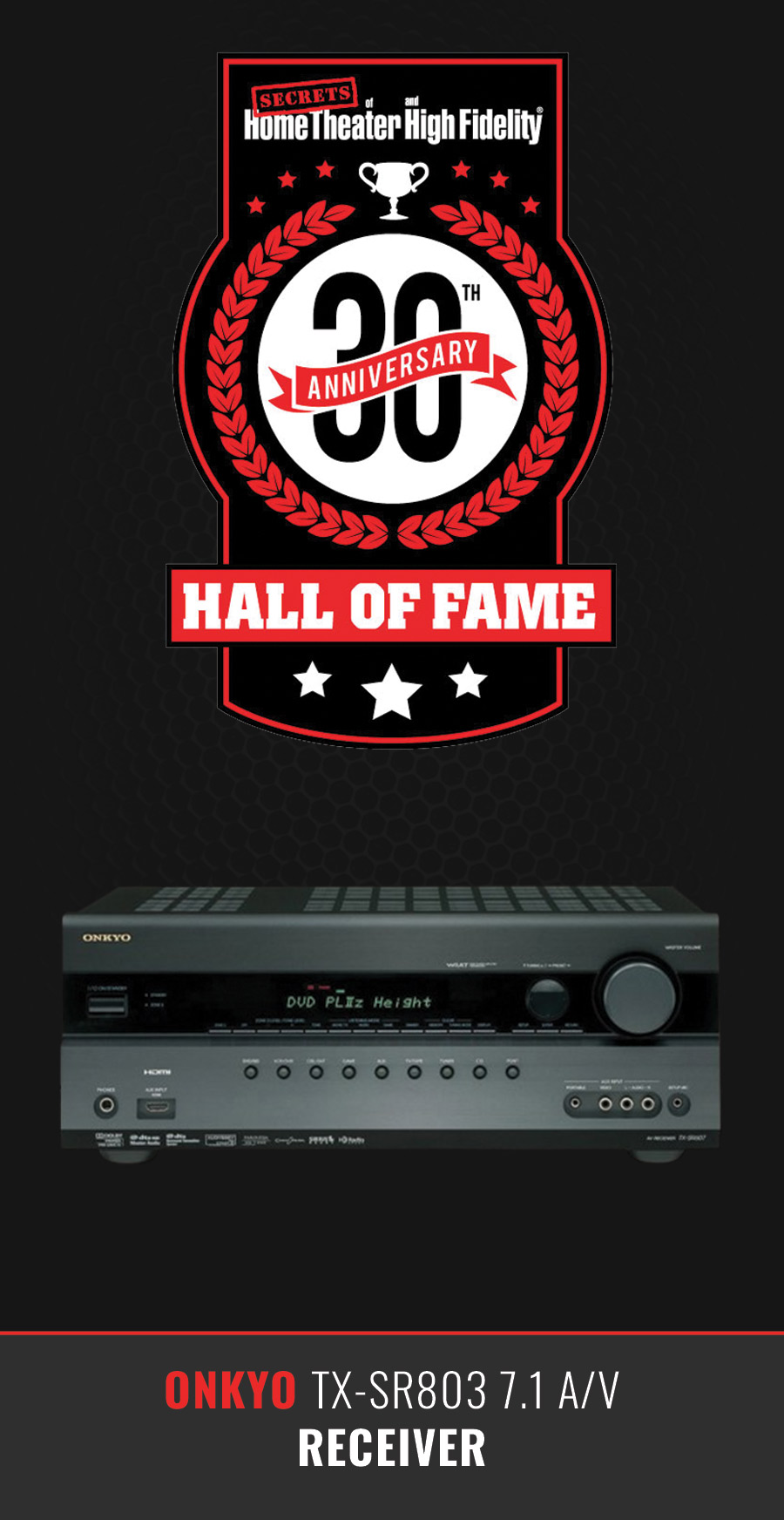
One of the better early low-cost HDMI A/V receivers.
“The bottom line is this: you need to pay quite a bit more money to dramatically improve upon the performance of the TX-SR607. That is high praise indeed and if $600 is within your receiver budget, the Onkyo TX-SR607 is tough to beat.”
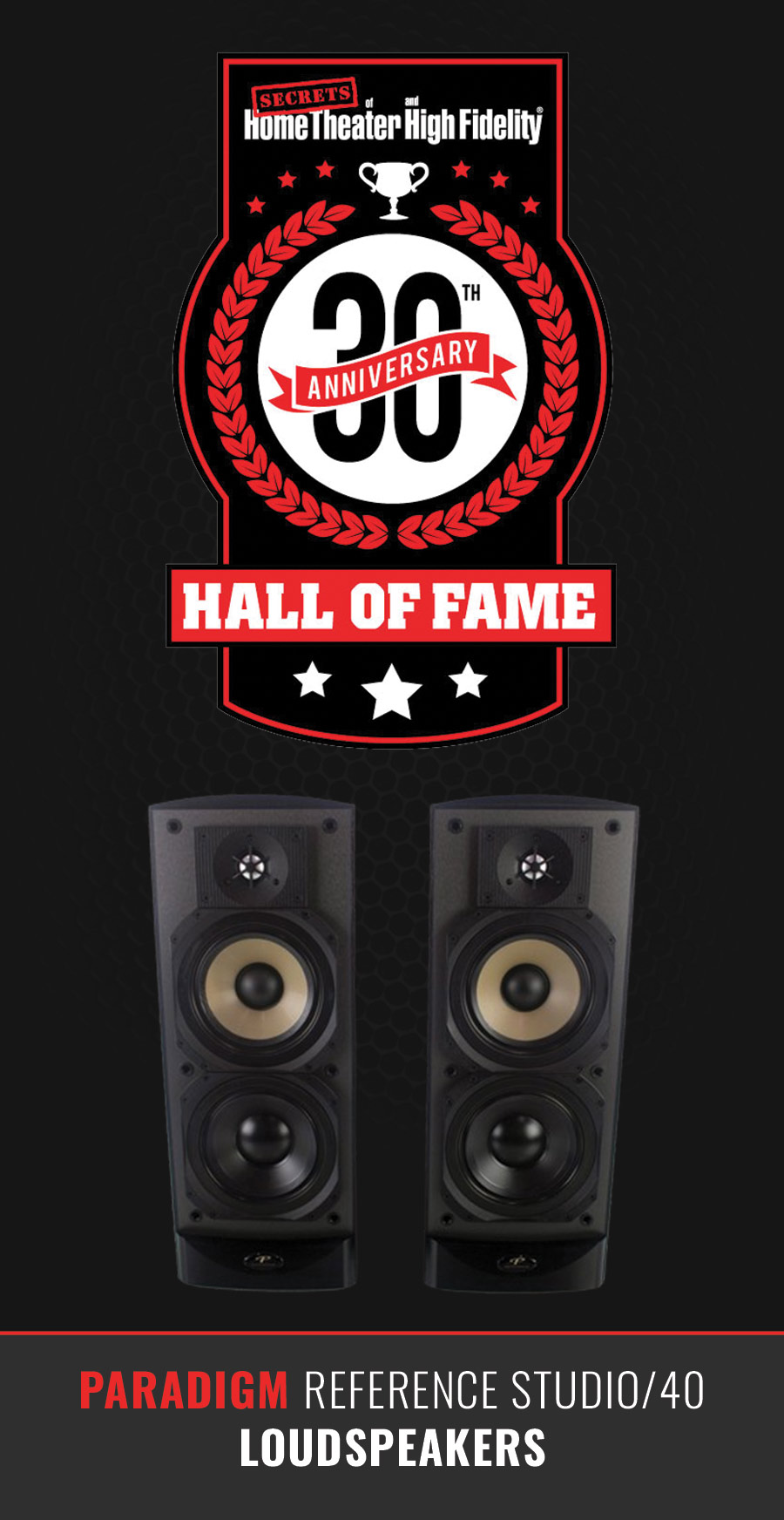
The Paradigm Reference Series Speakers Studio/40 + center/rear and subwoofer were priced at $900 upon release. The developments of the NRC Canada research transferred to a company (Paradigm) that produced fully realized products at low prices. Paradigm even made a copy of the huge NRC anechoic chamber. Paradigm’s literature was a translation of the NRC research papers into words the consumer could understand. No wonder the company was growing like a weed in the mid-late 90s.
“I find myself wanting to rave just a little. I can tell you that these speakers are what Paradigm wants you to know that they are: An incredible value. I don’t make a lot of money, and for what means I do have, the competition is fierce: gas, mortgage, food, and so on. Anything anyone can do to bring high-performance within my reach deserves special recognition, and the Reference speakers do just that. I urge you to put them on your list of models to audition.”
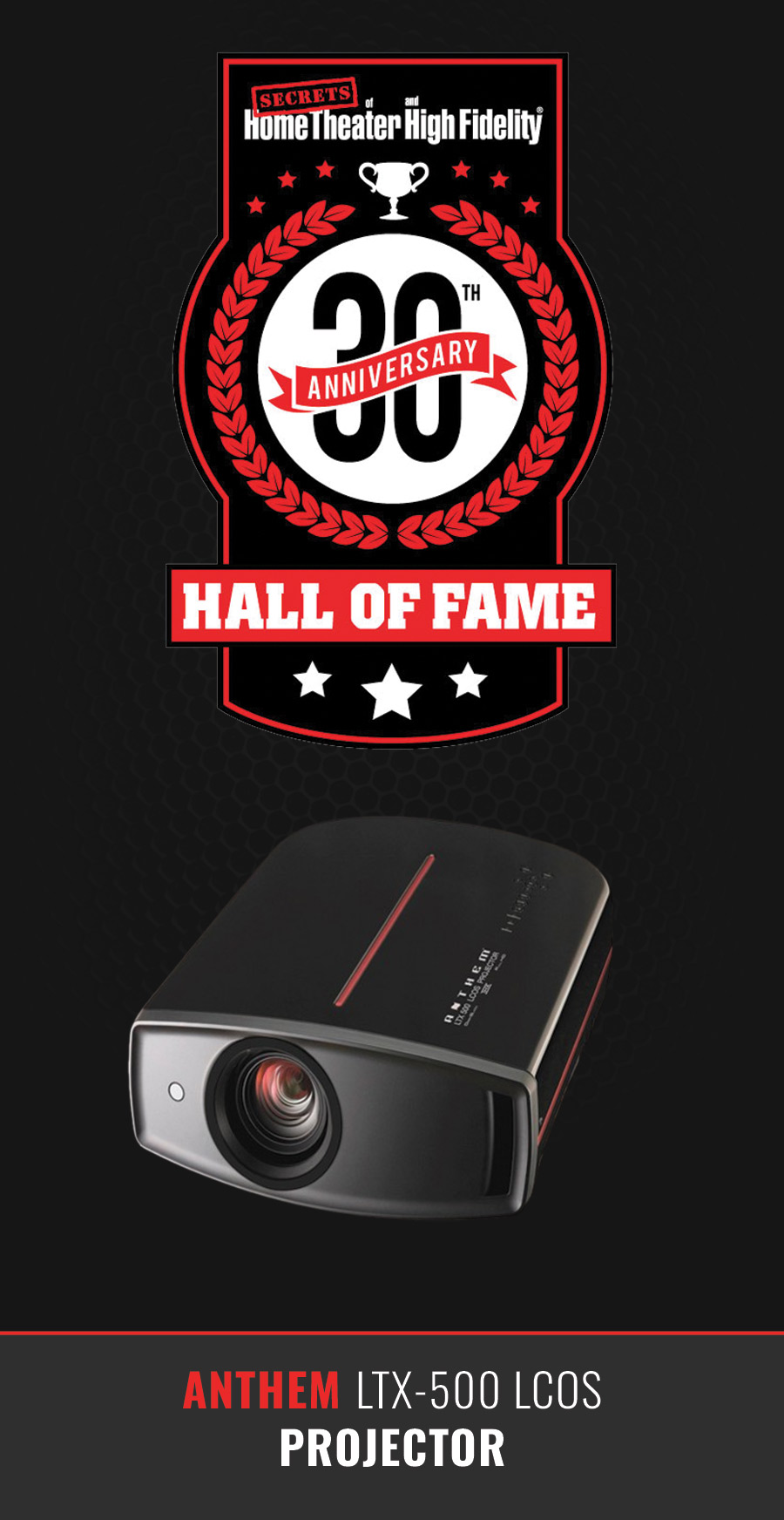
In 2009, Anthem offered its first, and to date only, front projection display, the LTX-500. Aside from its exterior badging, it was identical to the JVC DLA-RS20 LCoS Projector. Released in the early days of 1080p resolution, it represented the pinnacle of performance for home theater displays designed for small and medium spaces. At a time when the best projectors could muster perhaps 1000:1 contrast, the LTX-500 boasted 50,000:1 without the use of an auto-iris.
Just how good does it look? I reviewed one in 2009 and it never left my possession. It has been my number one reference projector for nearly 11 years. It was the first review I ever wrote and even though I’ve worked with many projectors since then, I’ve never been compelled to replace it. OK, there was one exception, JVC’s DLA-RS640. That display almost stayed with me, but it didn’t represent a great enough upgrade to warrant its $8000 purchase price.
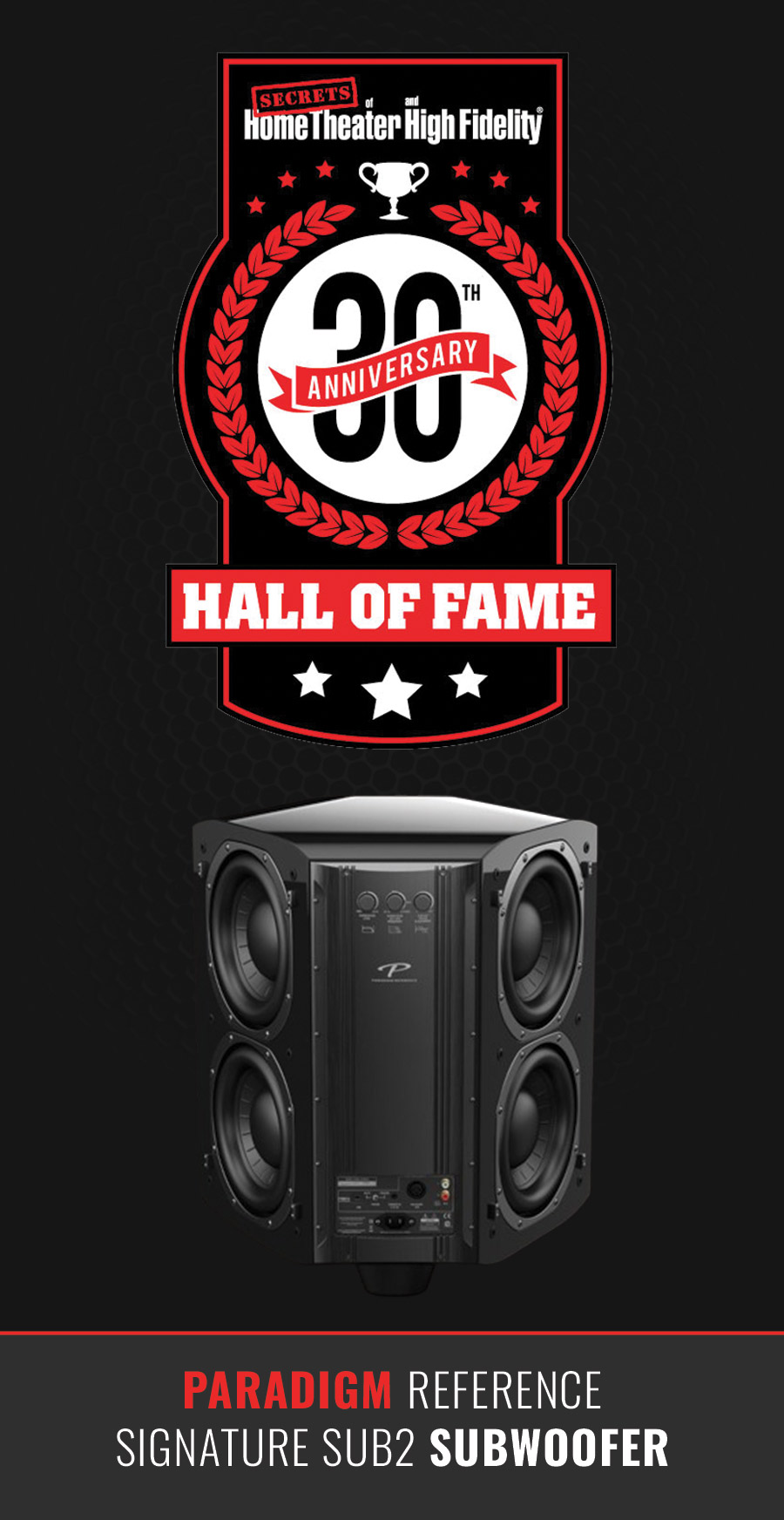
This subwoofer is a reference for all other subs out there. Unusual in its ability to operate either off a standard 120 Volt electrical service or a dedicated 240 Volt AC service, its amplifier will produce 3,000 watts RMS in 120 Volt mode and a whopping 4,500 watts RMS (9,000 watts peak) in 240 Volt mode. All of this audio power is delivered to six 10” drivers, each of which has a 25-pound magnet. They have very low distortion, even at 10 Hz and pushing high dB. When I played two of these subs in my test lab, my neighbor three houses up from me on our street told me that she could feel the ground trembling in her yard.
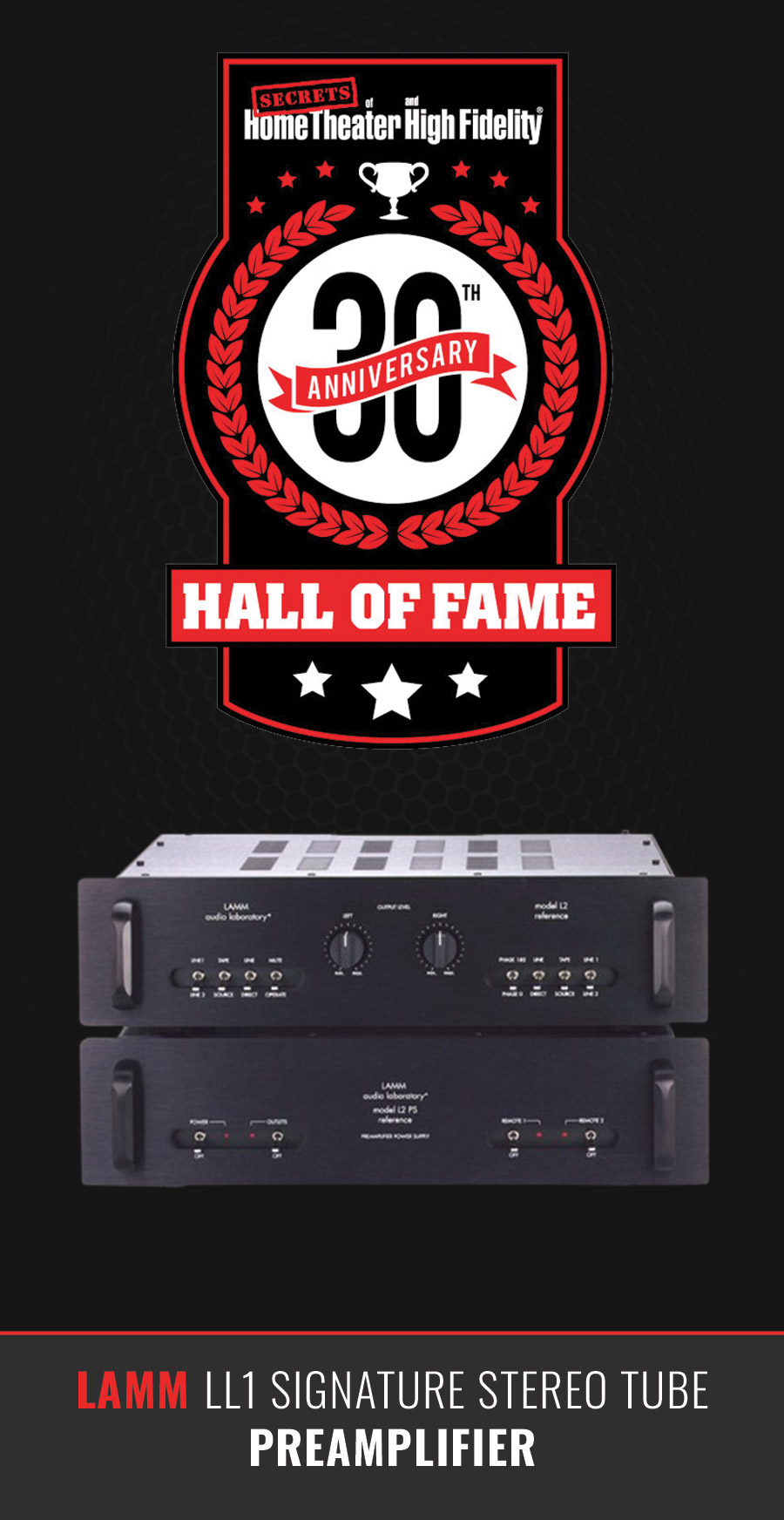
A fabulous four-chassis tube preamplifier, this model set standards for tube preamplifier performance. Each channel of the preamp has four 6H30 dual triodes operating in Pure Class A bias, meaning that each channel has eight triodes delivering the music. Also, each channel has its own separate power supply in its own separate chassis. It has been updated, but the original version nevertheless still is a unit worth pursuing if you can find one.
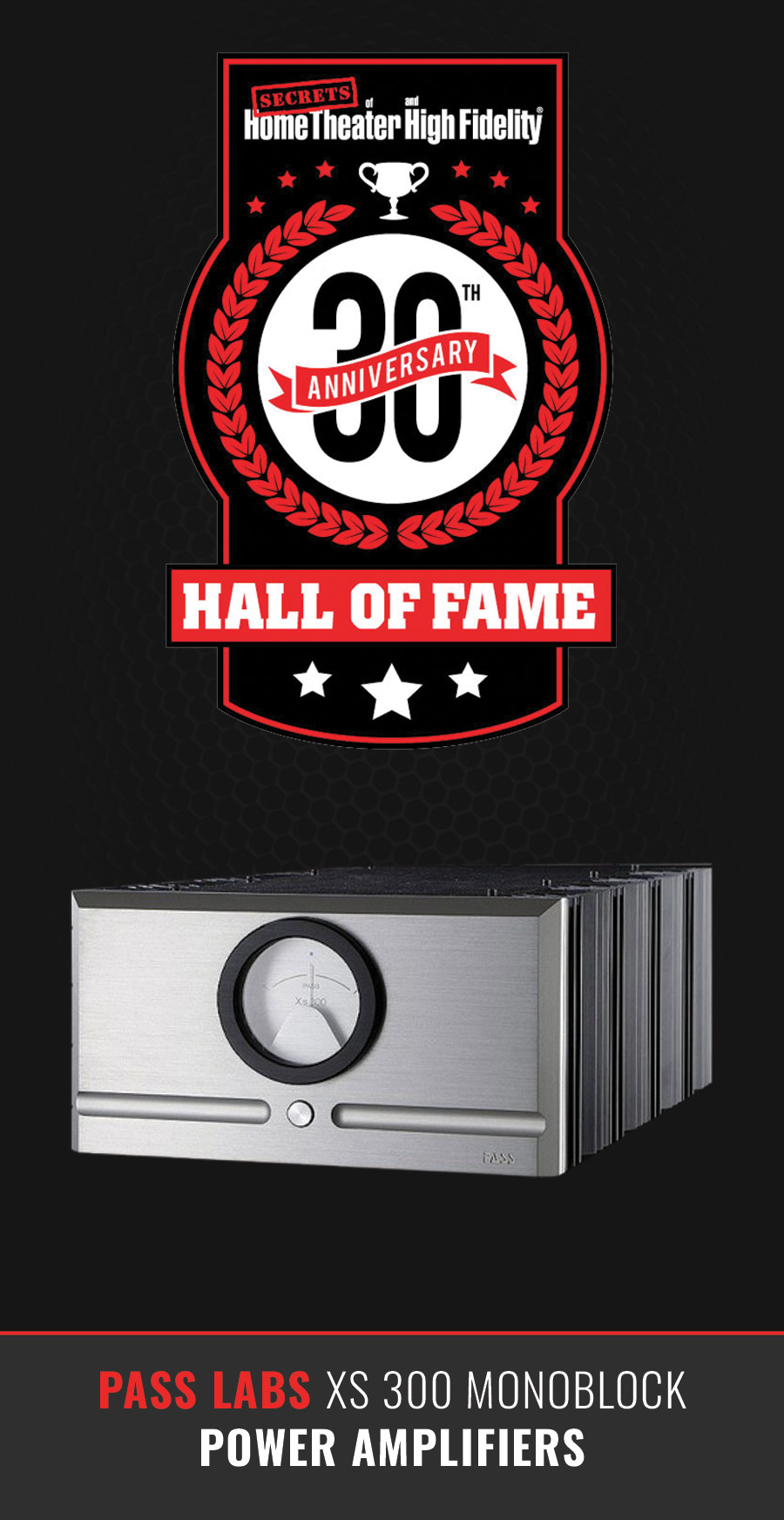
This power amplifier takes a much different approach to distortion. It was designed totally with the staff listening to the various versions and saying, “this one sounds the best.” It produces significant distortion, but the distortion is very appealing, and the amplifier does not produce it from stress, but rather, the circuit is specifically oriented for it. Each channel is a two-chassis monoblock, weighing 300 pounds in total. Each channel produces 300 watts of Pure Class A sound. Extremely unusual, and really marvelous.
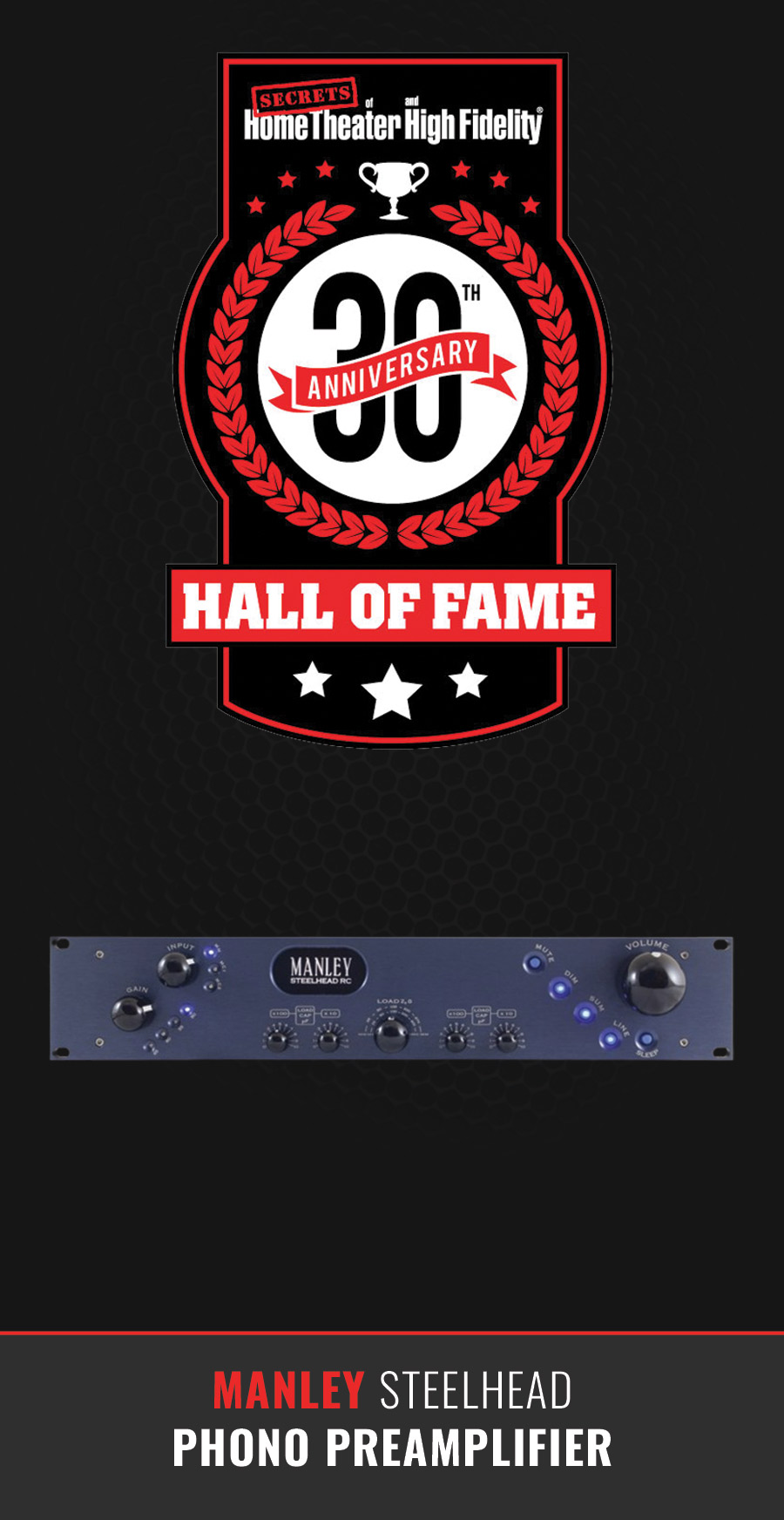
All tube, pure Class A bias.
This phono preamplifier (also called a phono stage) has been a standard offer from Manley Labs for many years. That is a testament to its popularity with audiophiles.
It operates in Pure Class A bias, and one of its outstanding features is that it produces significant amounts of 2nd order harmonics. Such harmonics are also produced by the phono cartridge, which are part of the results shown in the review. Noise contributes to the THD+N measurement, so the harmonic distortion itself is about 1%.
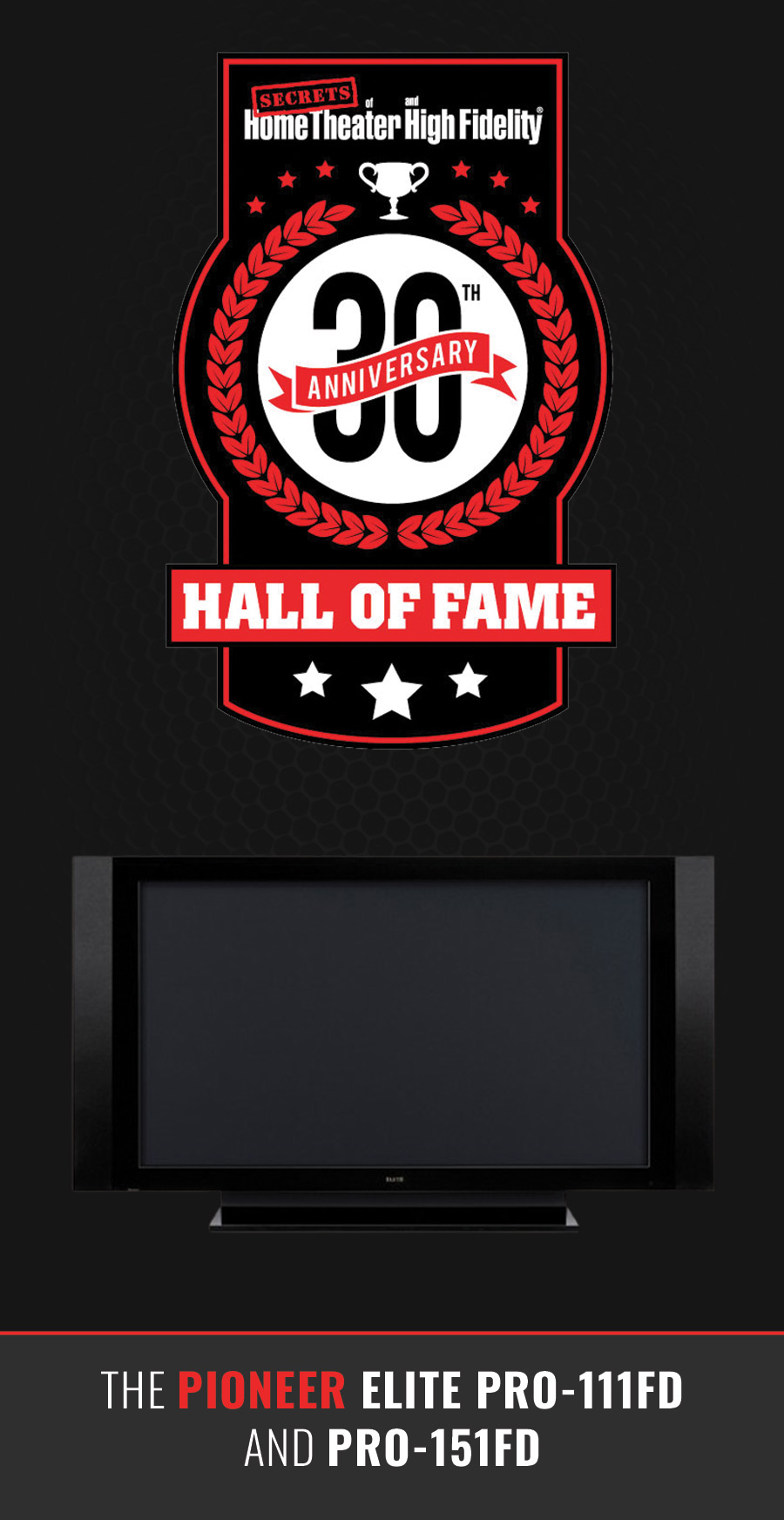
The Pioneer Elite PRO-111FD and PRO-151FD were never reviewed by Secrets but the PRO-111, a 50-inch model, is still my reference flat panel. It also is a 2009 product which sadly, was its last year of production. In fact, that was the year Pioneer canceled its Elite plasma line and dropped the price of its left-over TVs to reasonable levels. Though the final version of the Elite was arguably the best TV in the world at the time, it sold for the eye-watering price of $4500 in the 50-inch version which was a big ask in a market where a 50-inch LCD could be had for $1500.
Not only was it the king of contrast (and still is today when compared to any LCD), it had special ISF modes accessed by software that could bring it to a highly accurate standard while peaking at 175 nits and delivering an honest 50,000:1 contrast ratio.
It is unfortunate that plasma is no longer with us. Samsung was the last company to market them and that era ended in 2014. But I’ll watch my Pioneer until it works no more. Plasma is dead, long live plasma!



